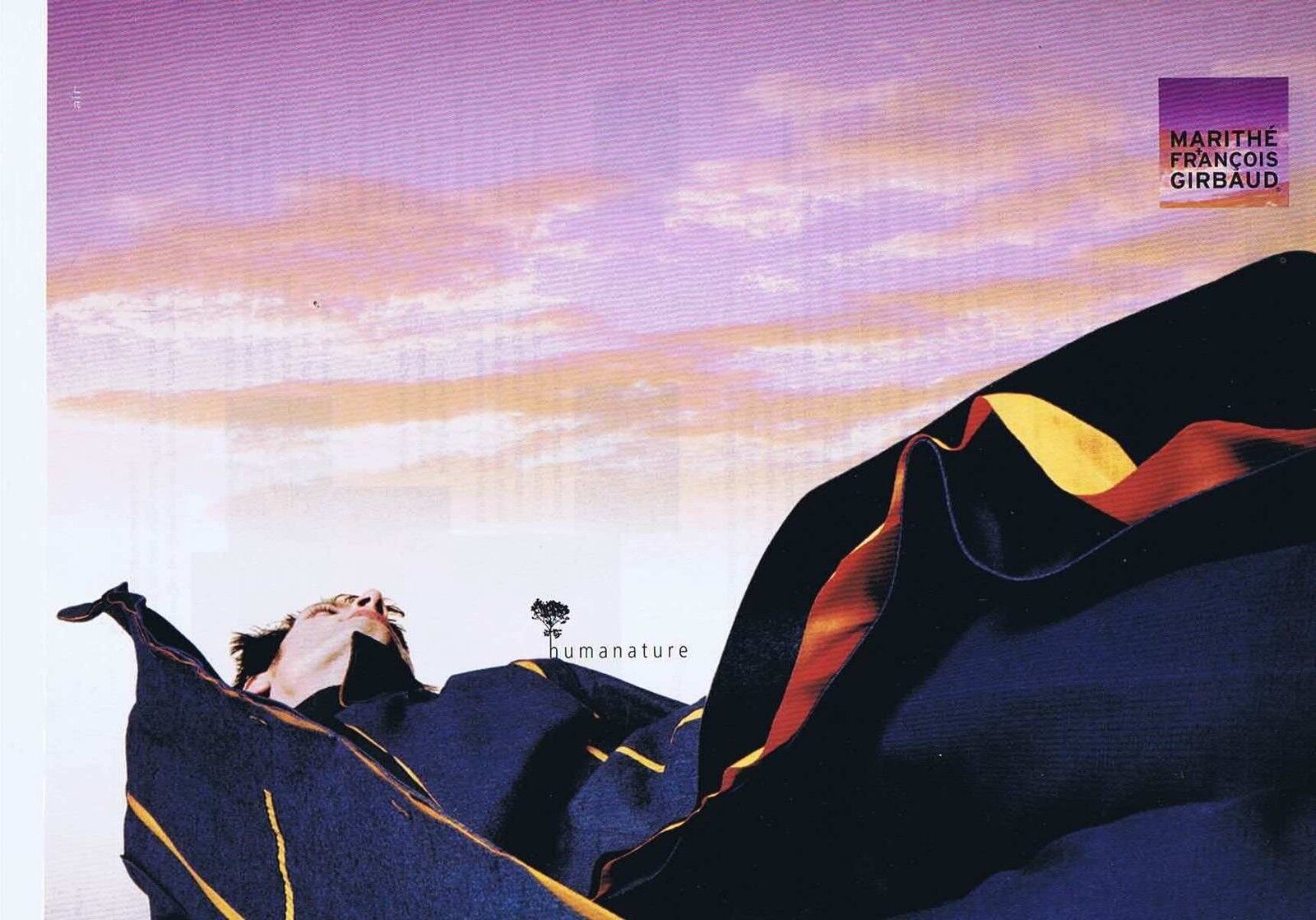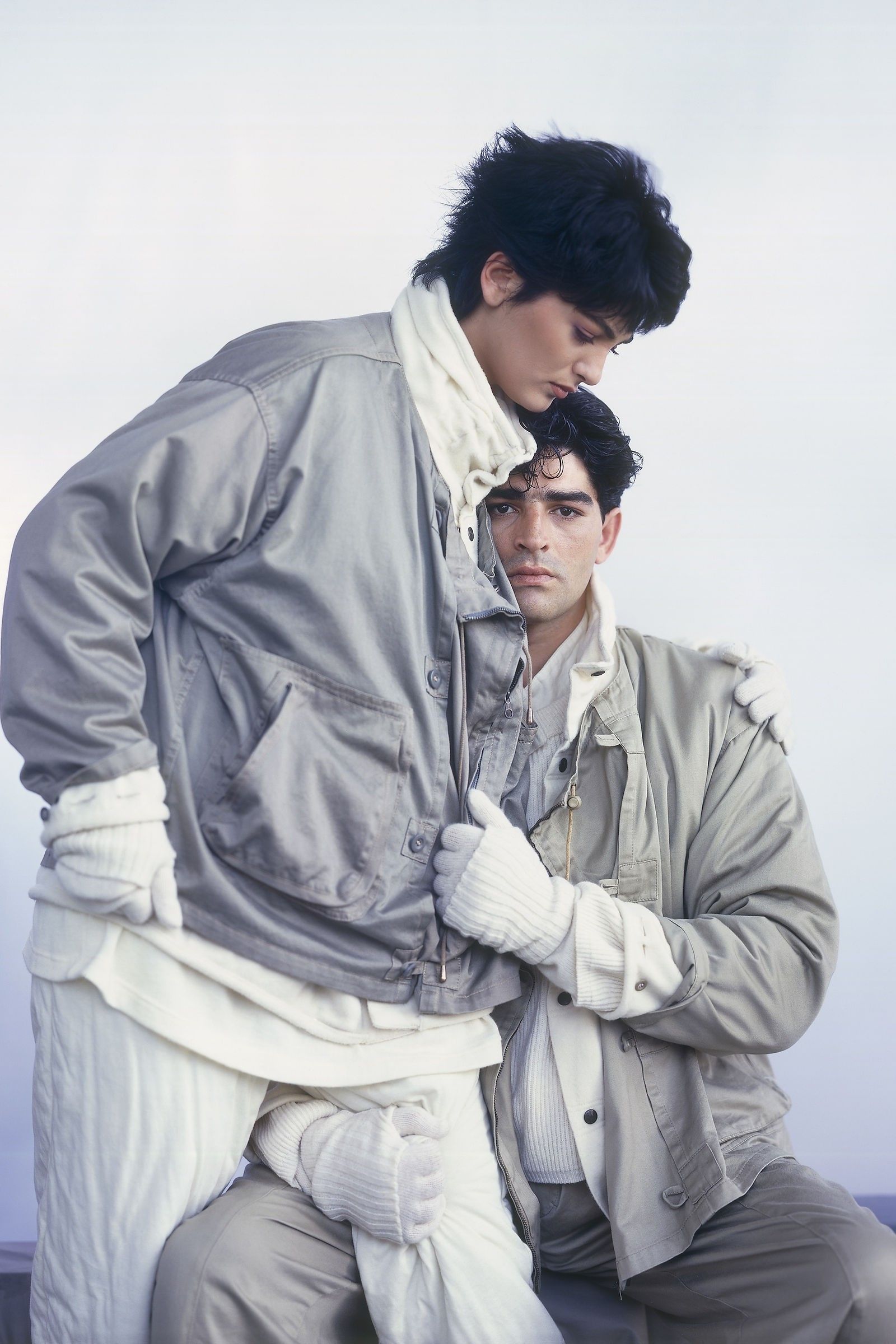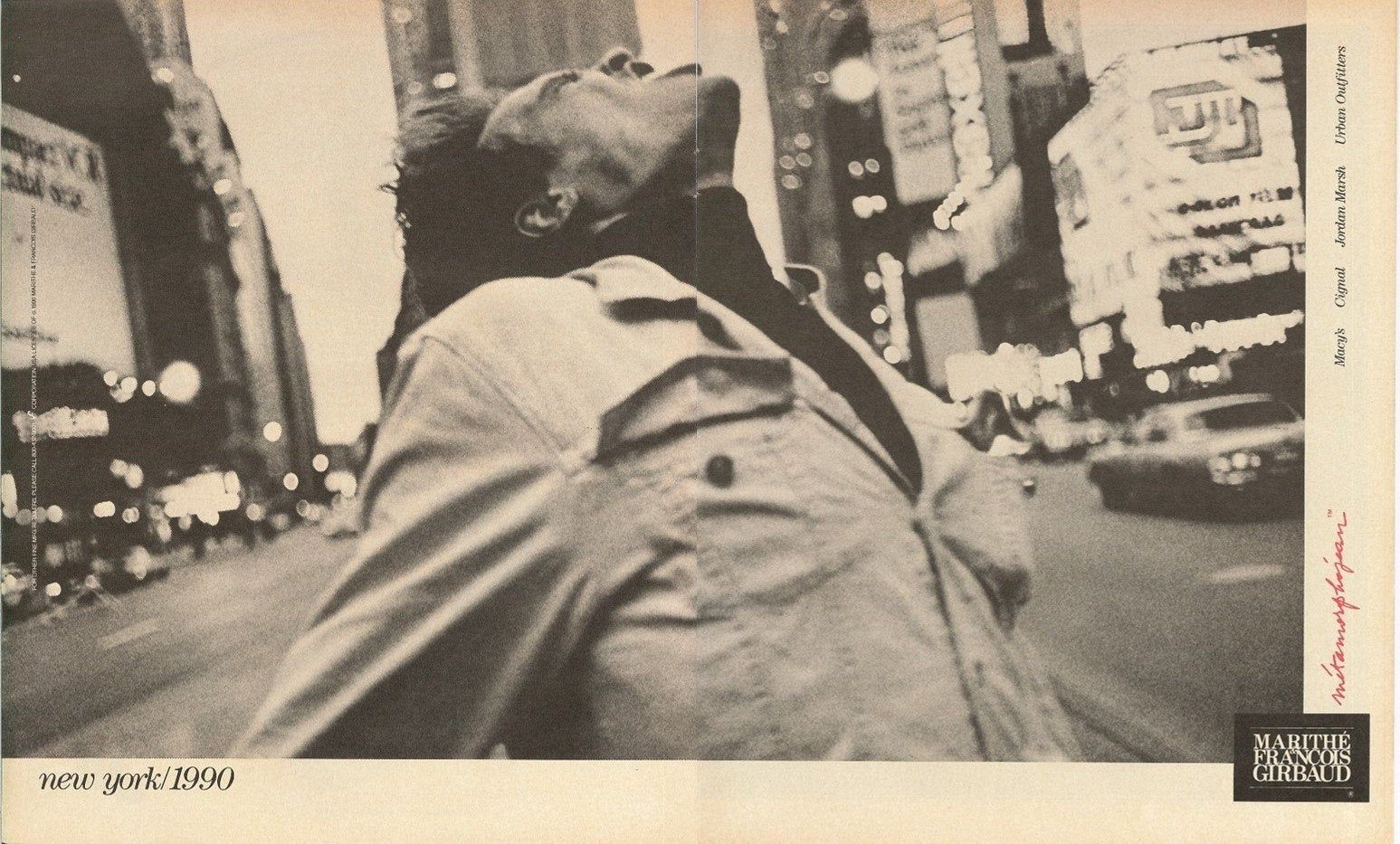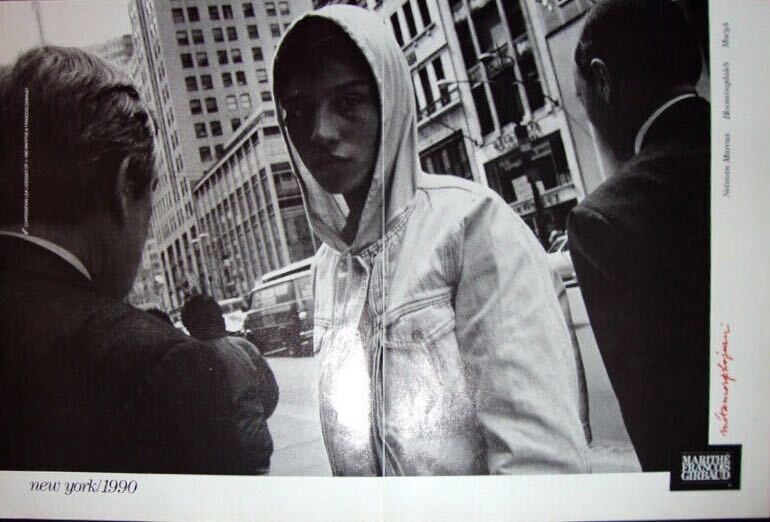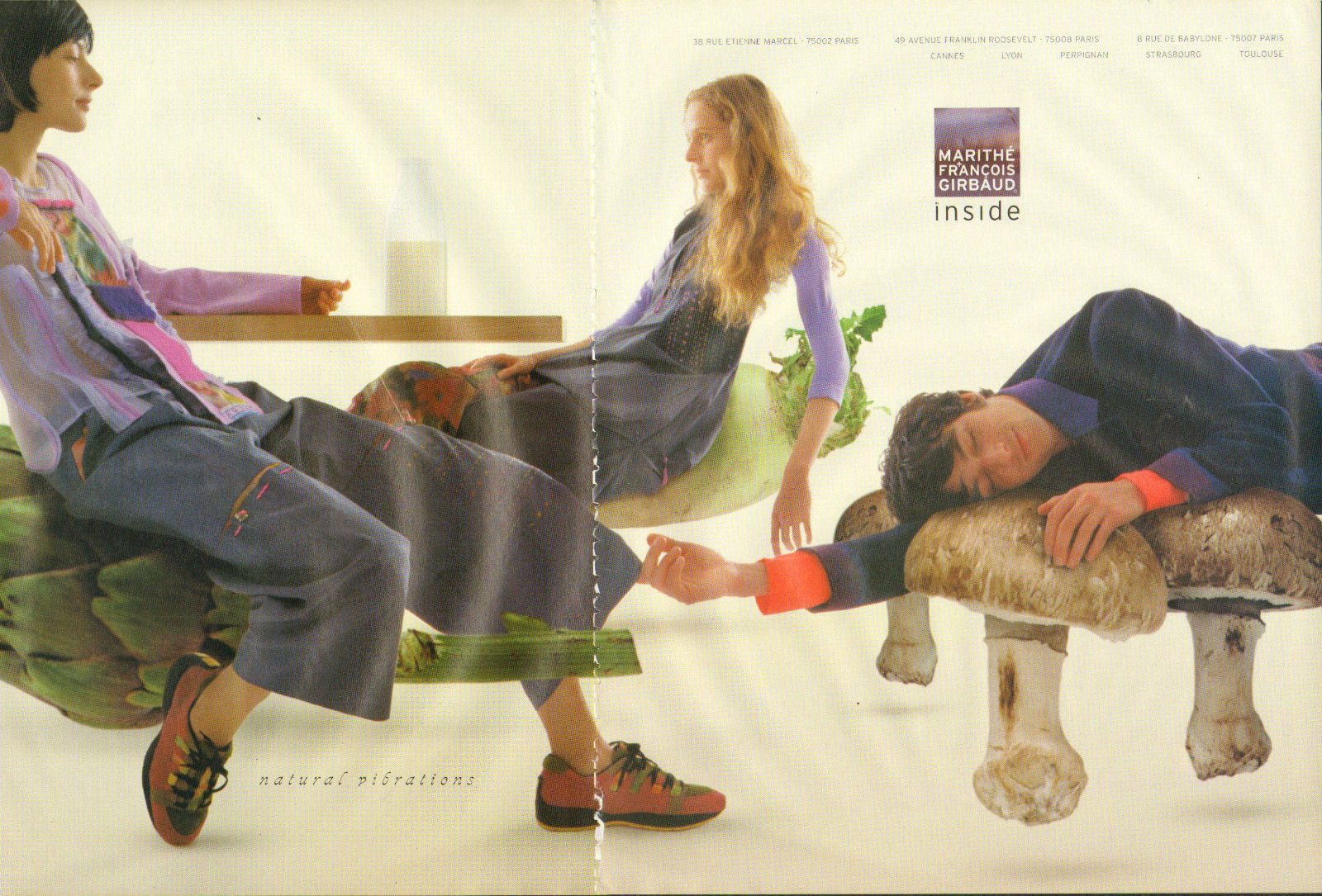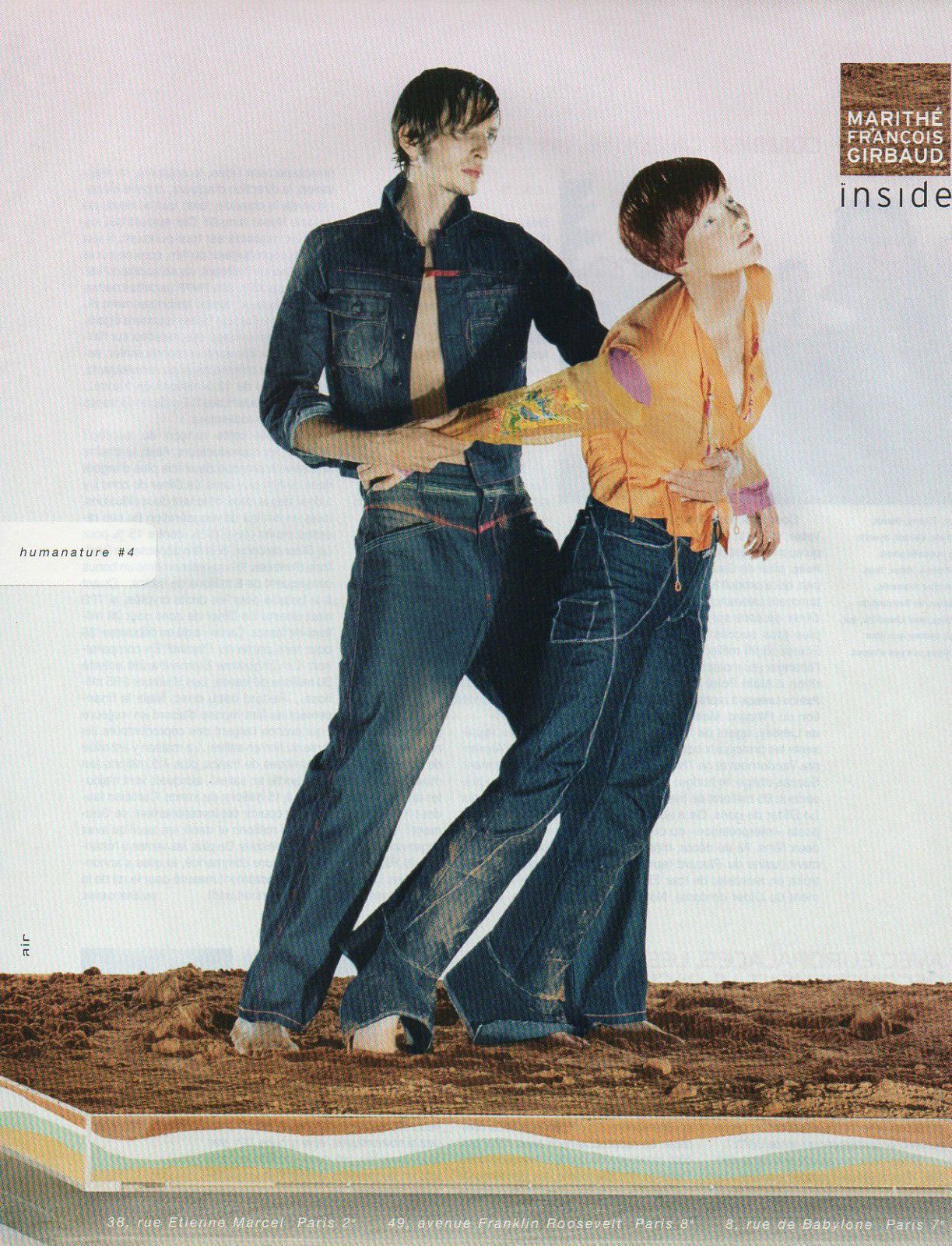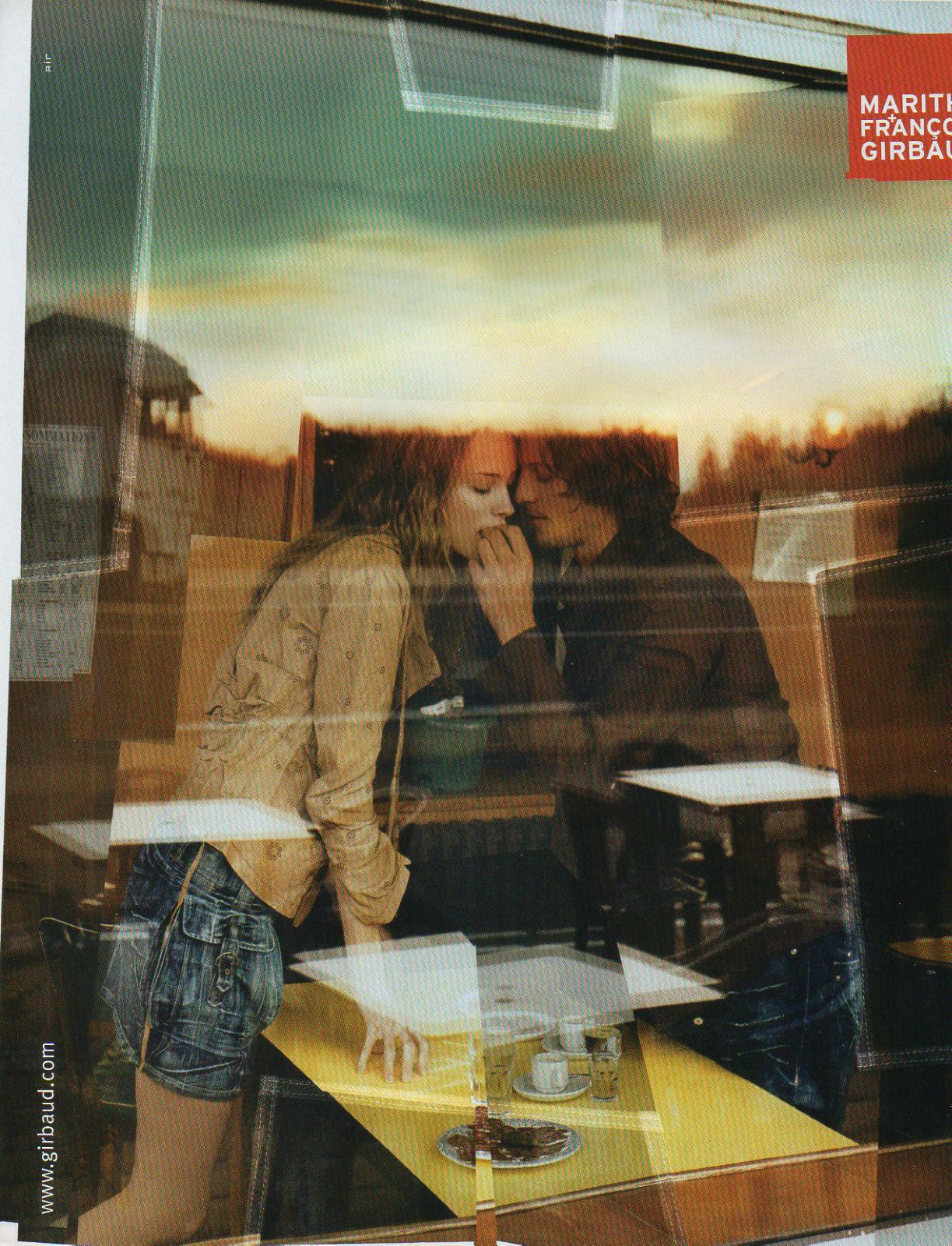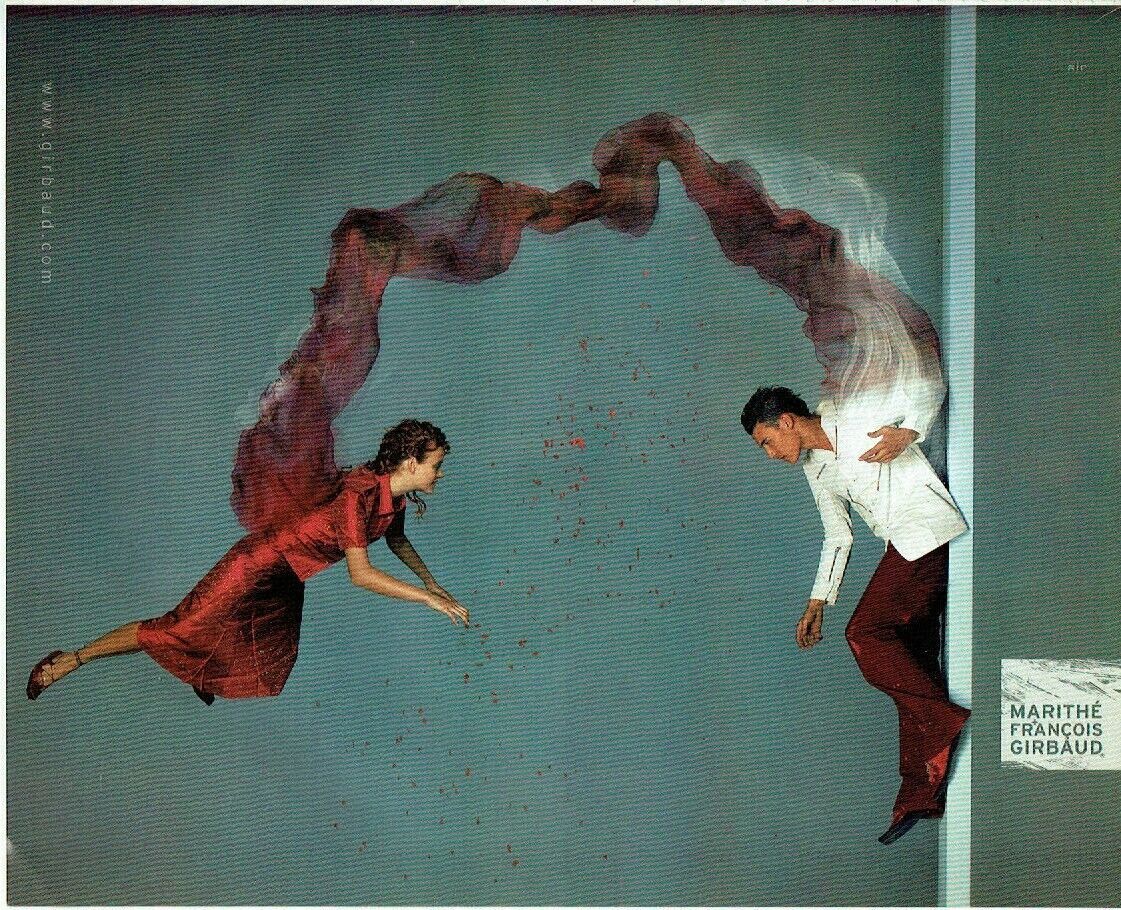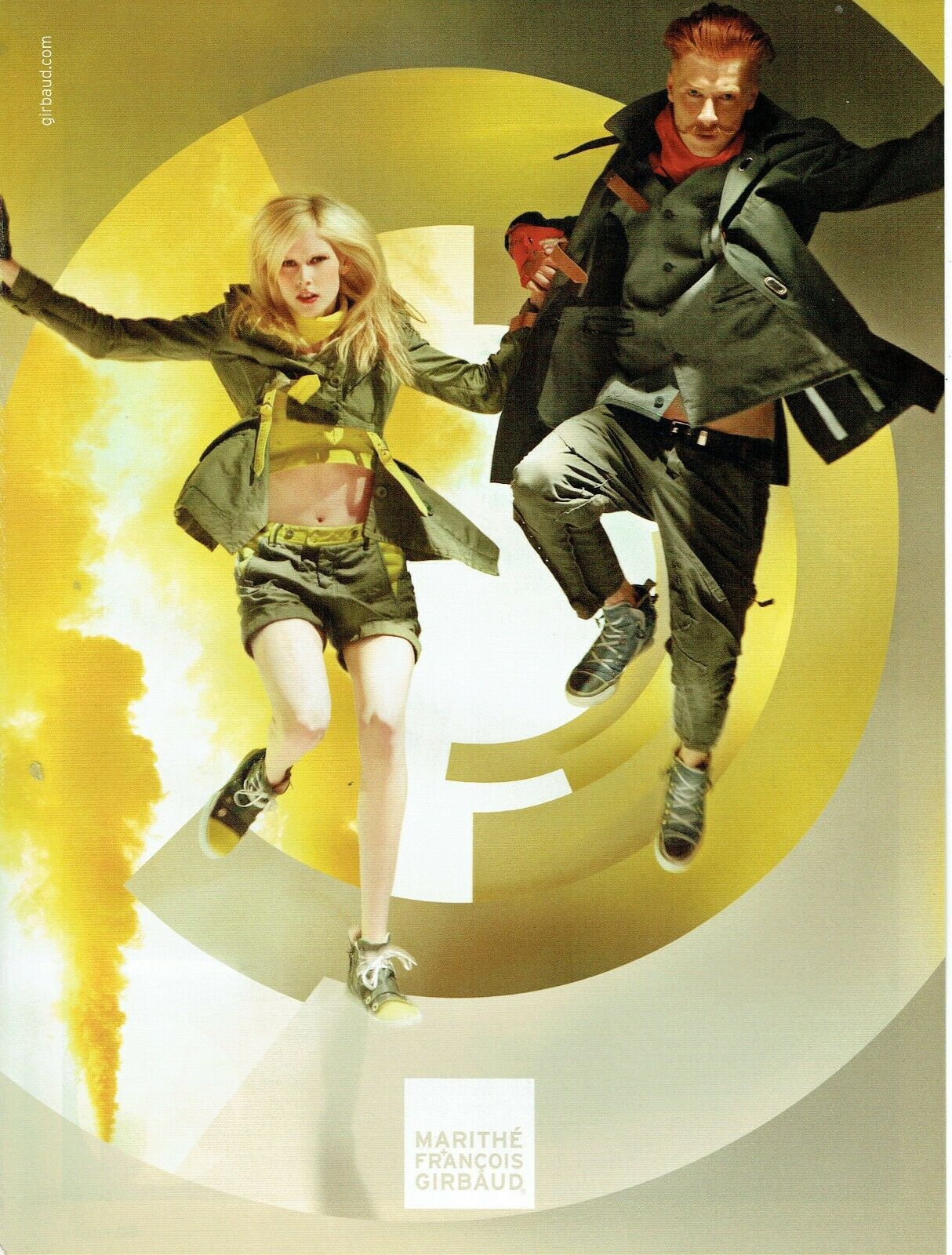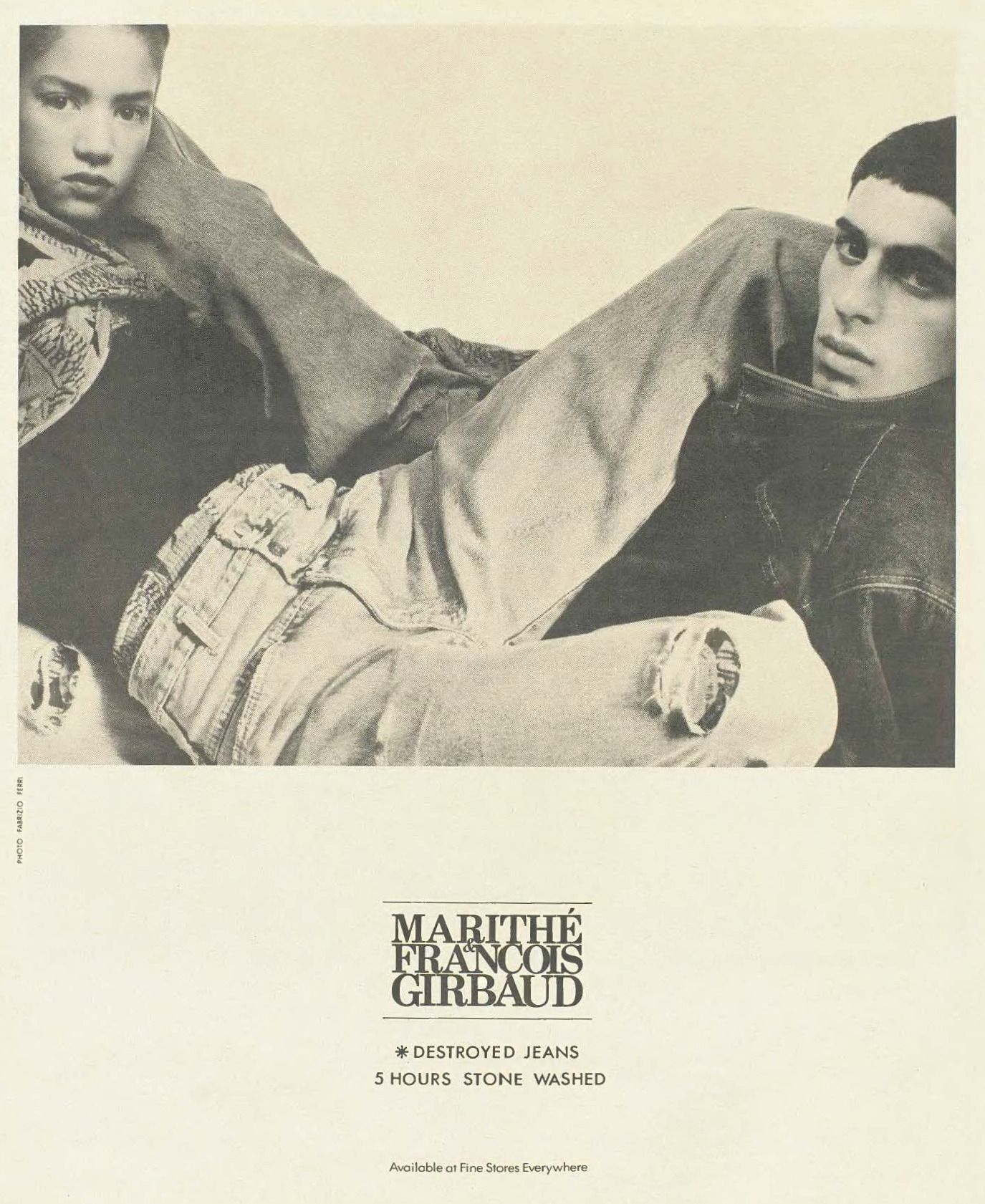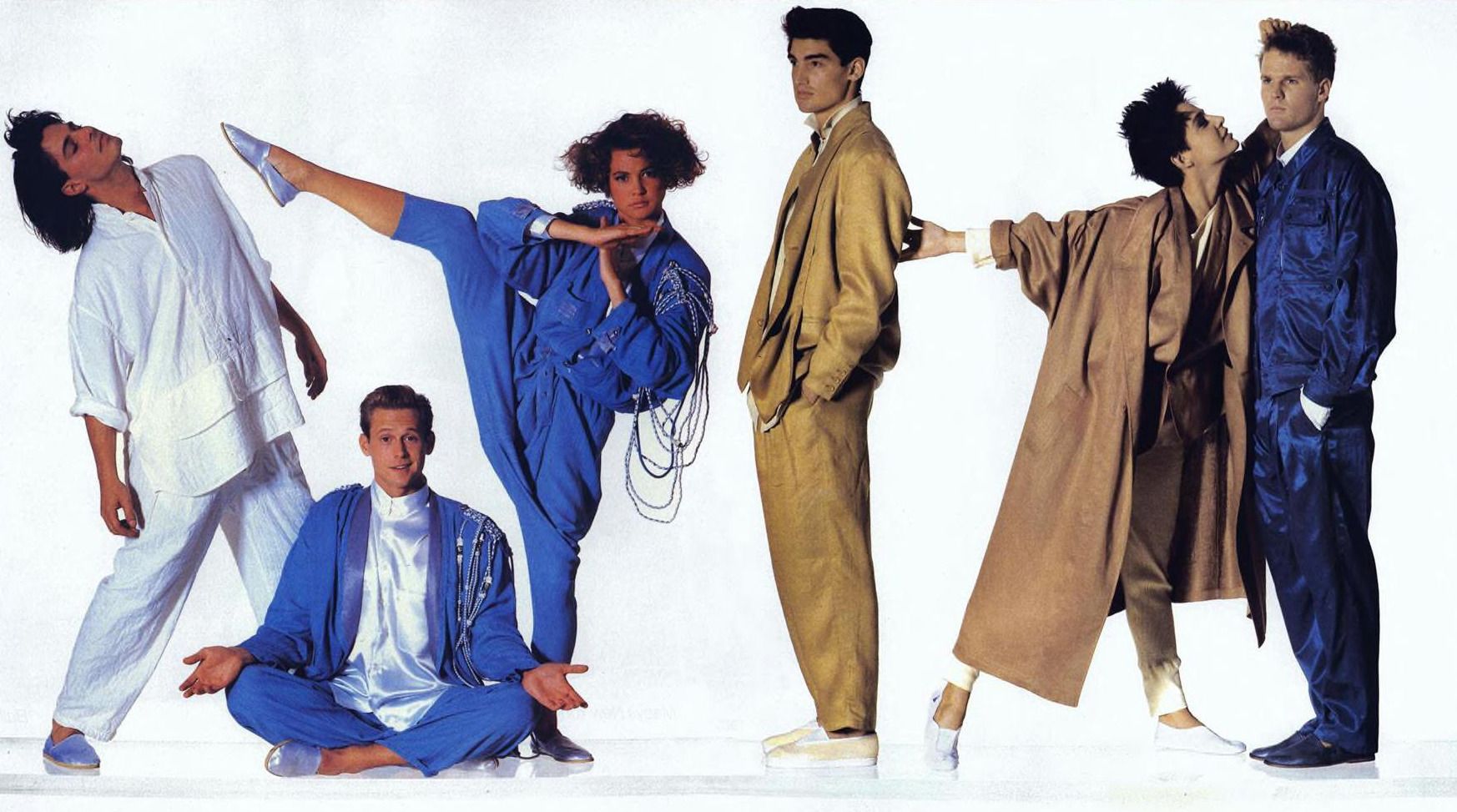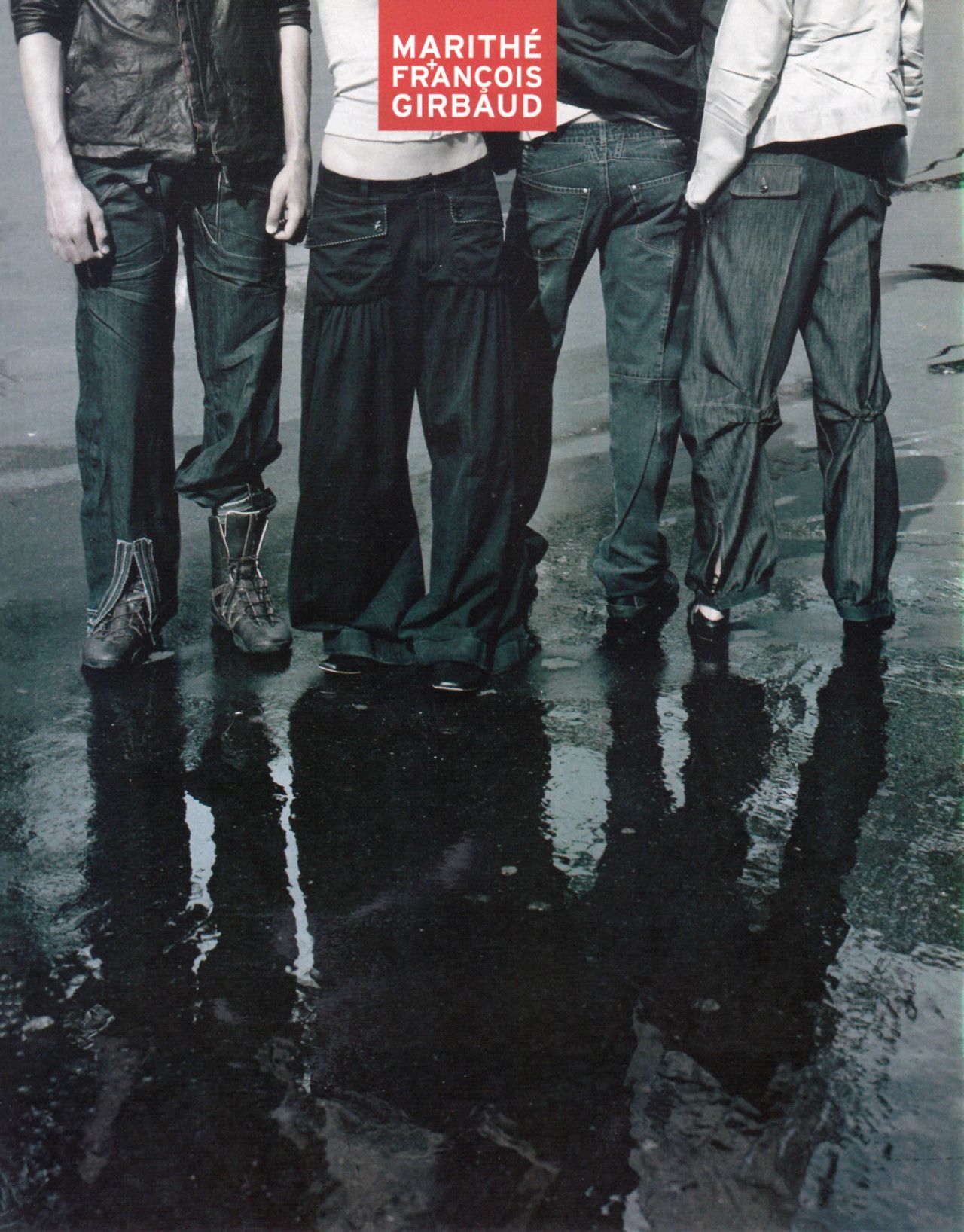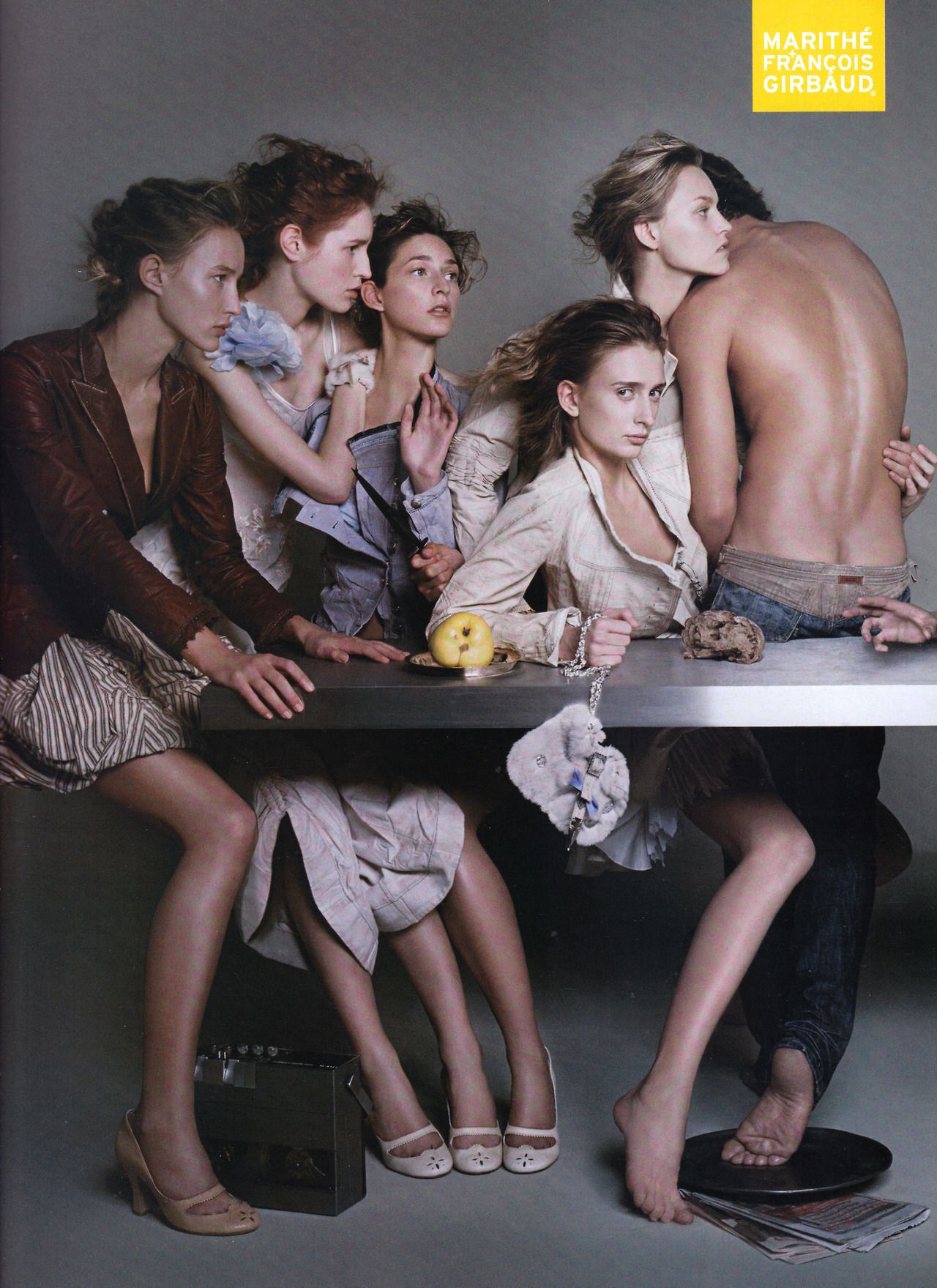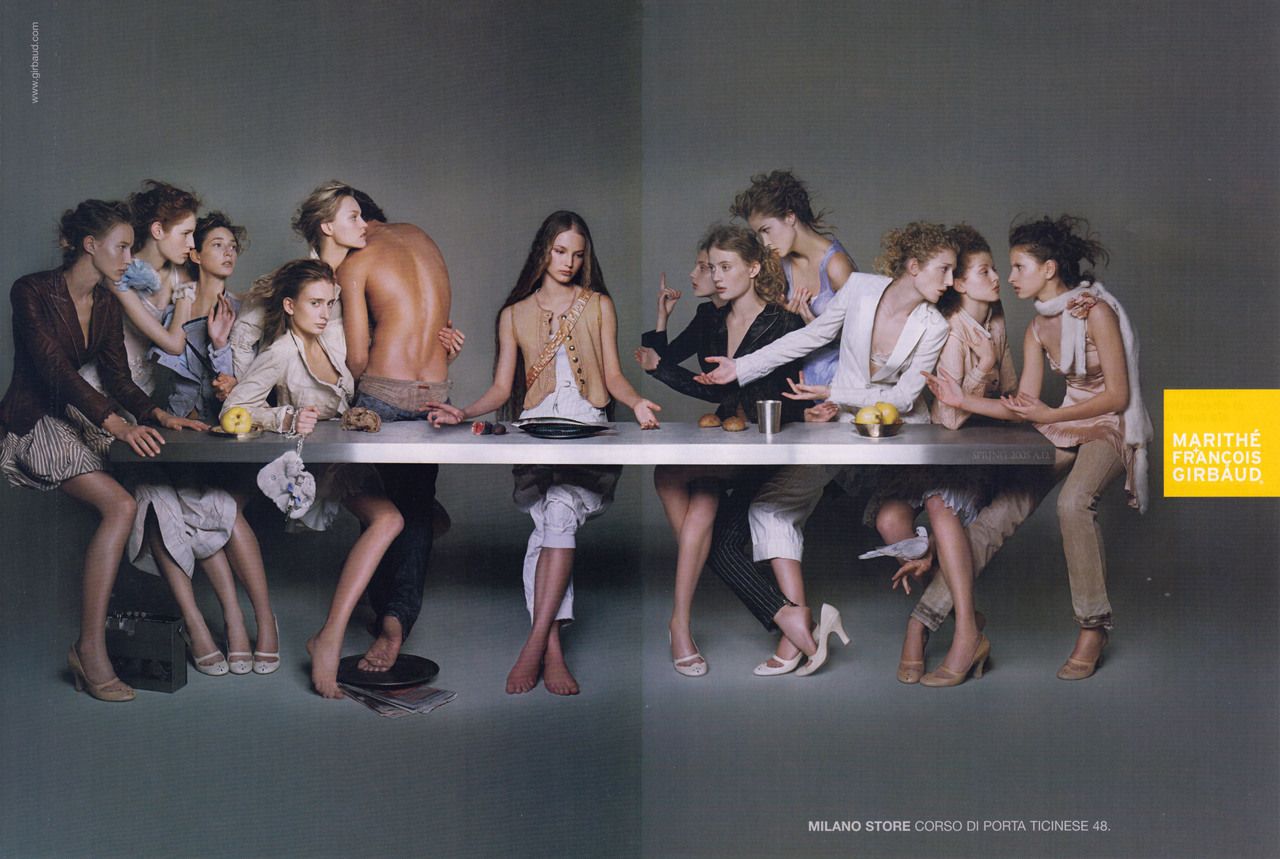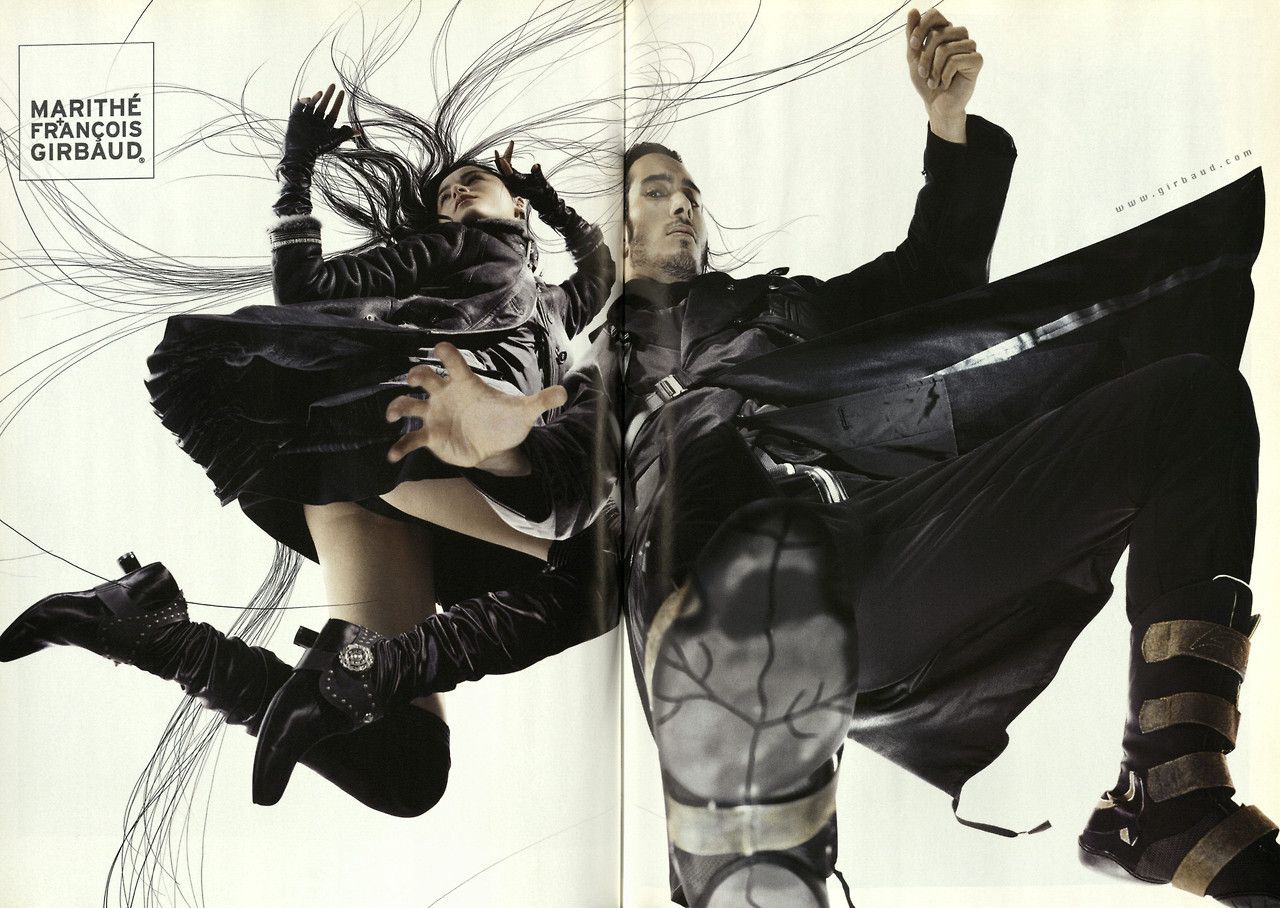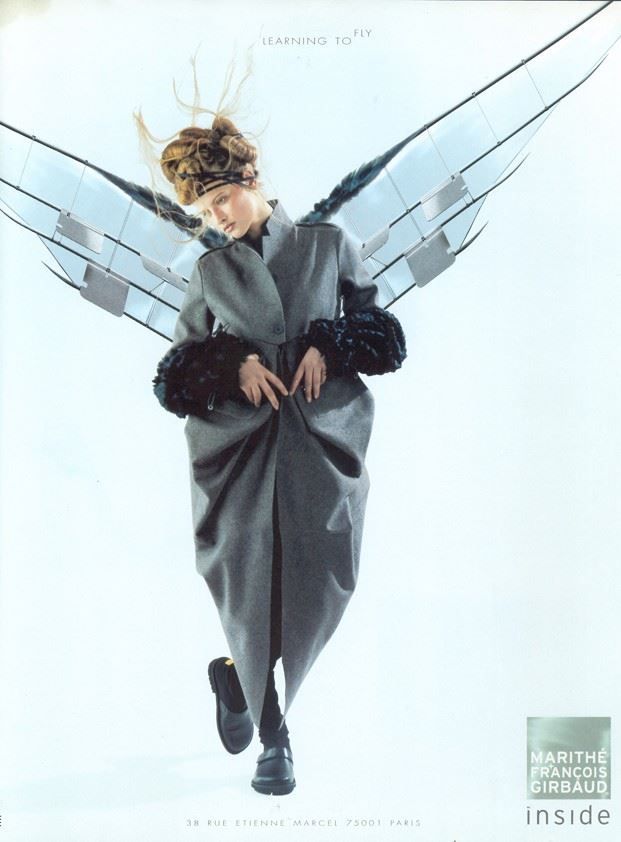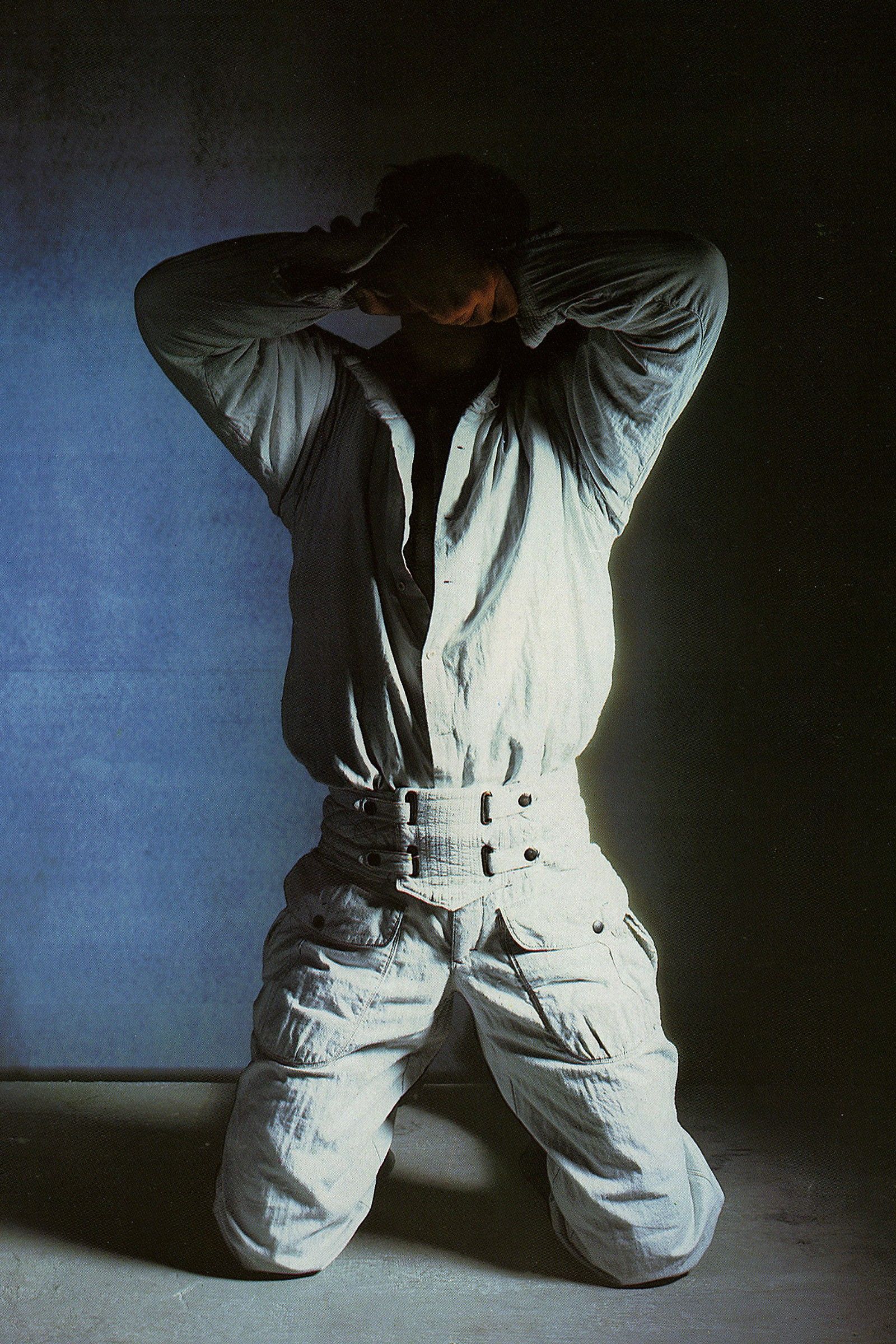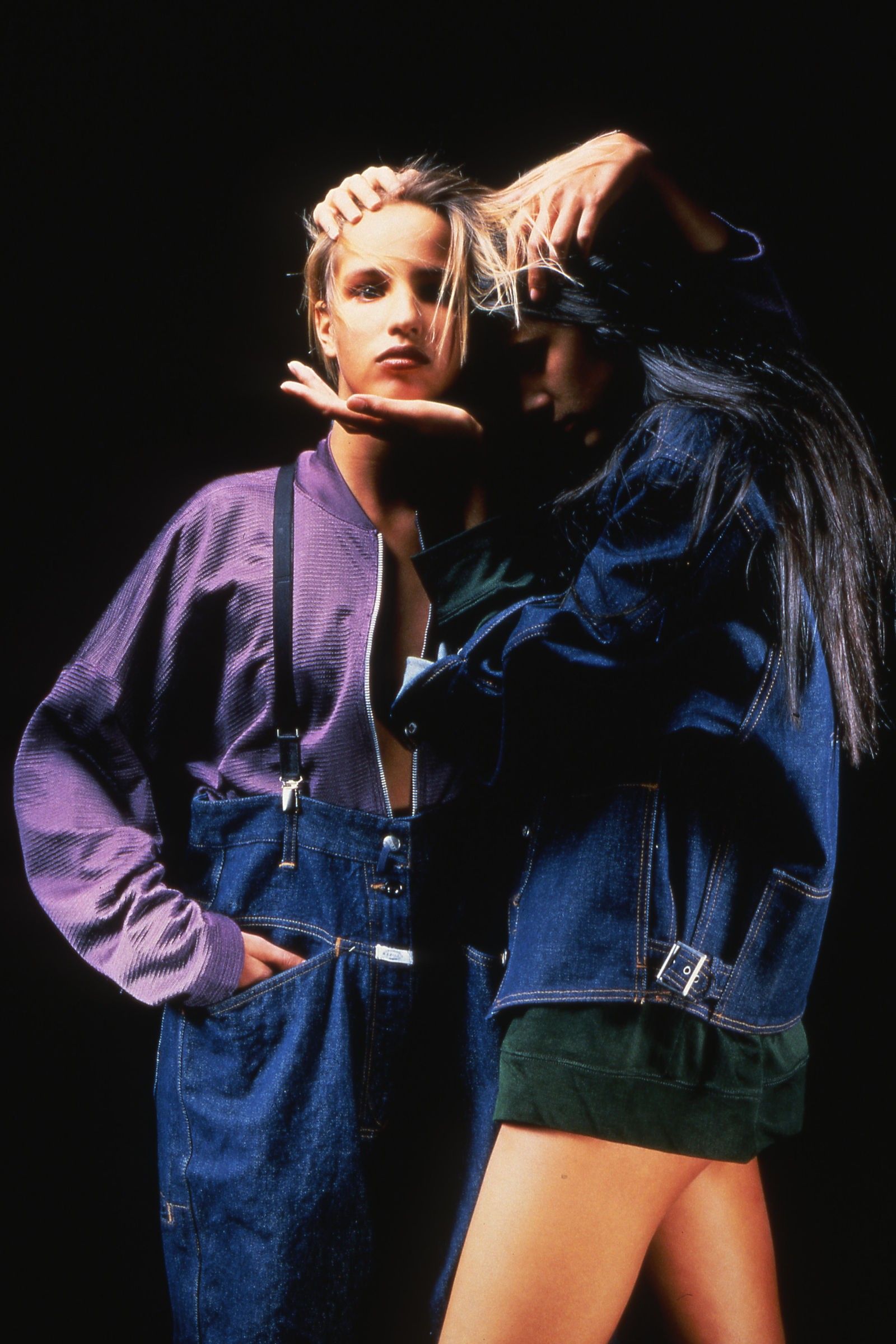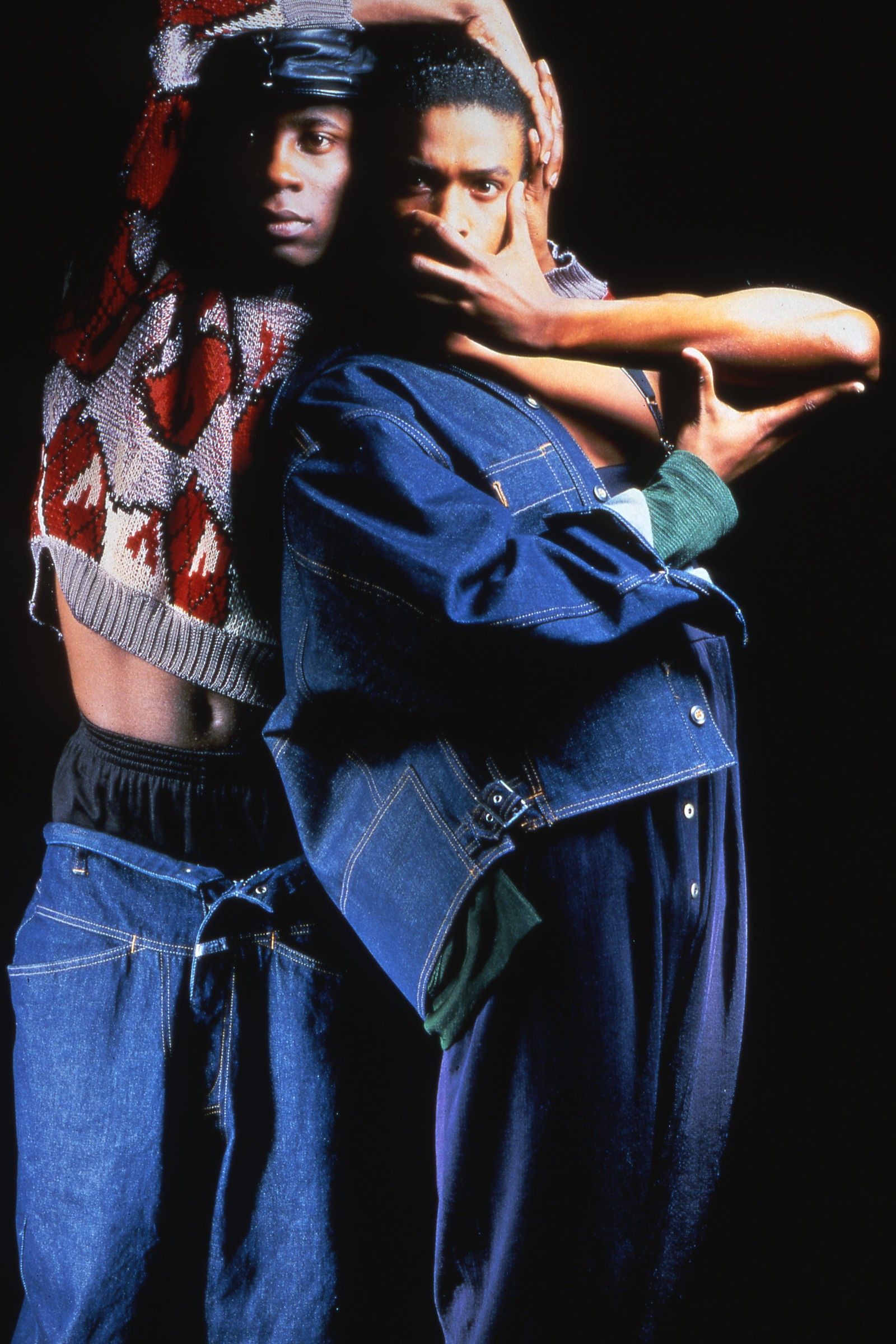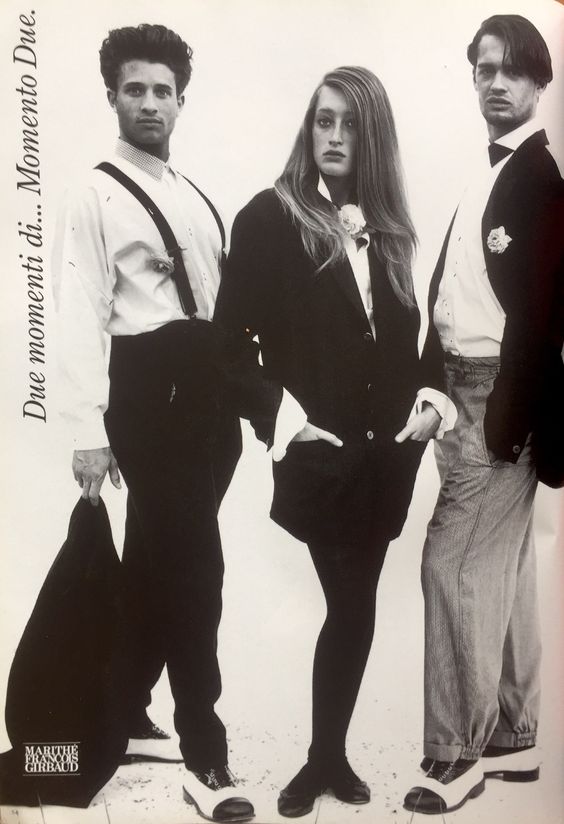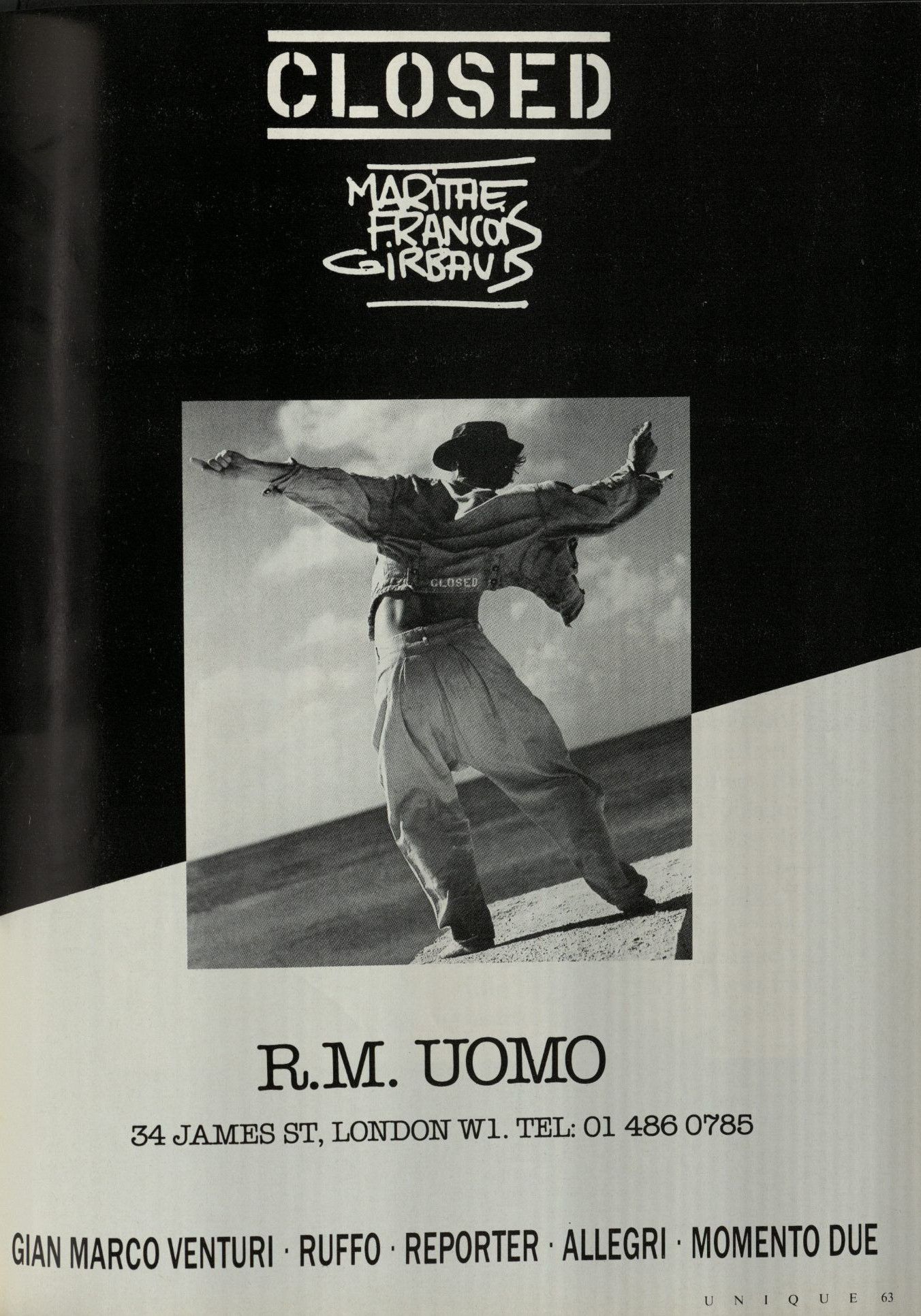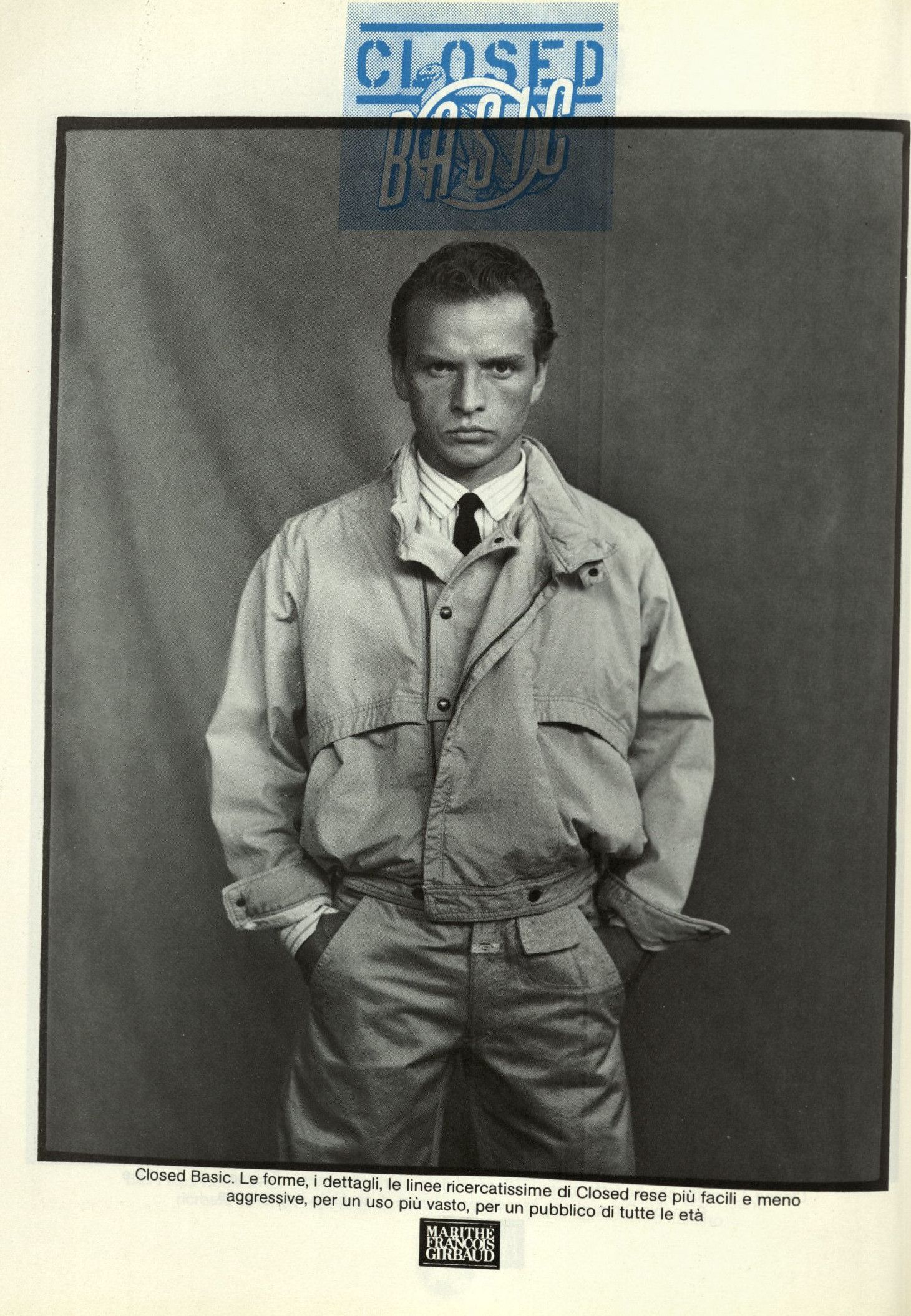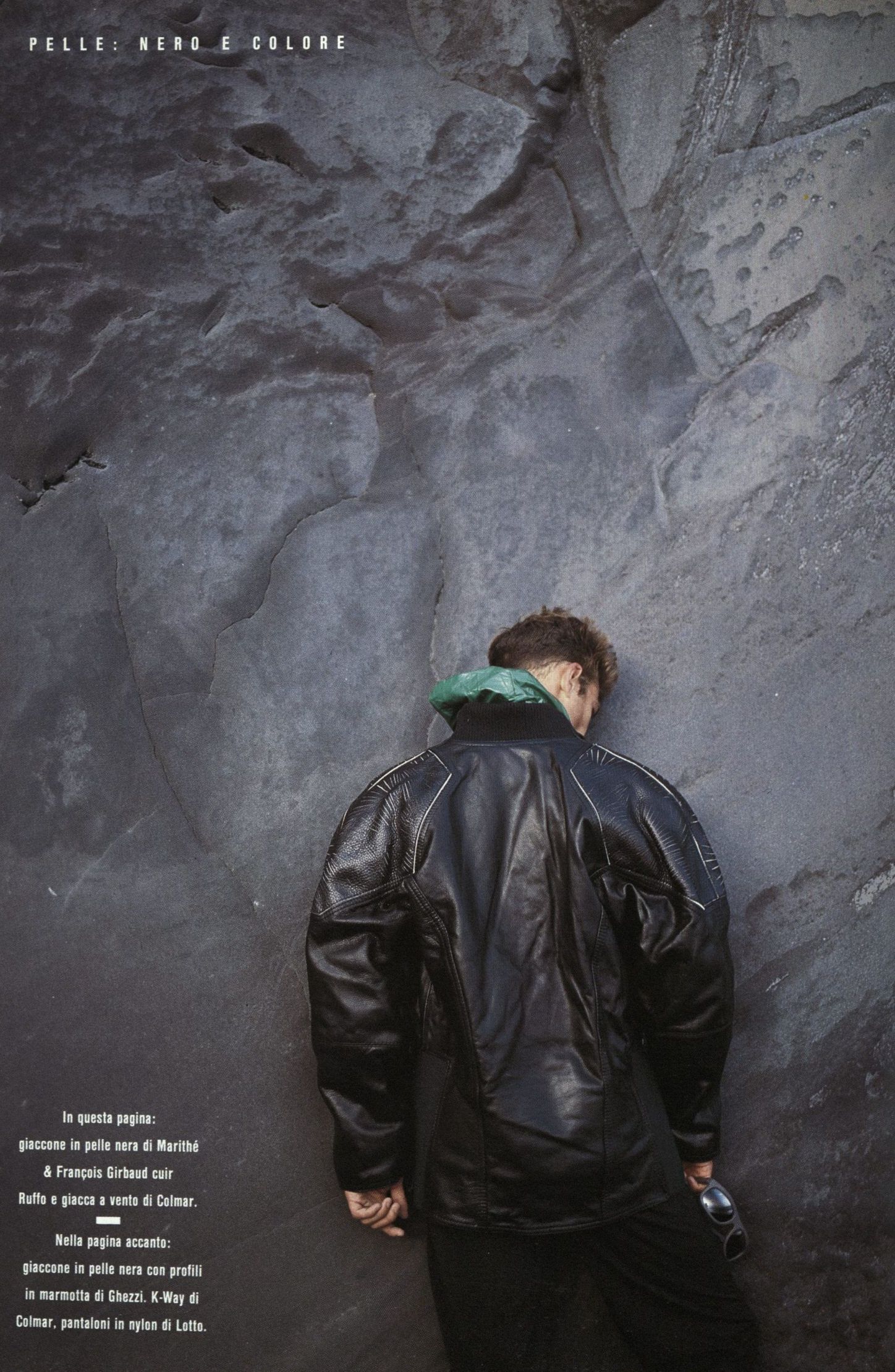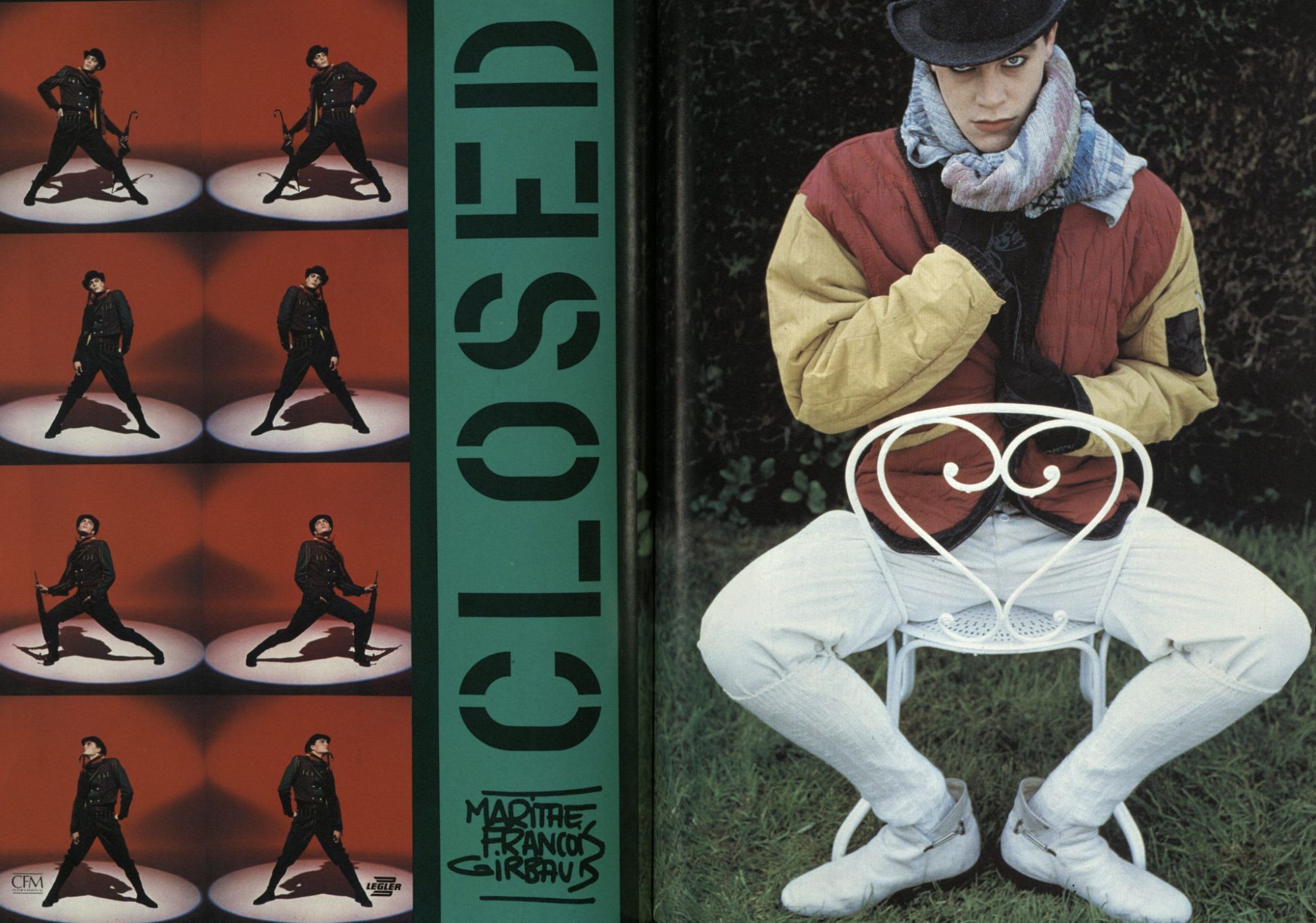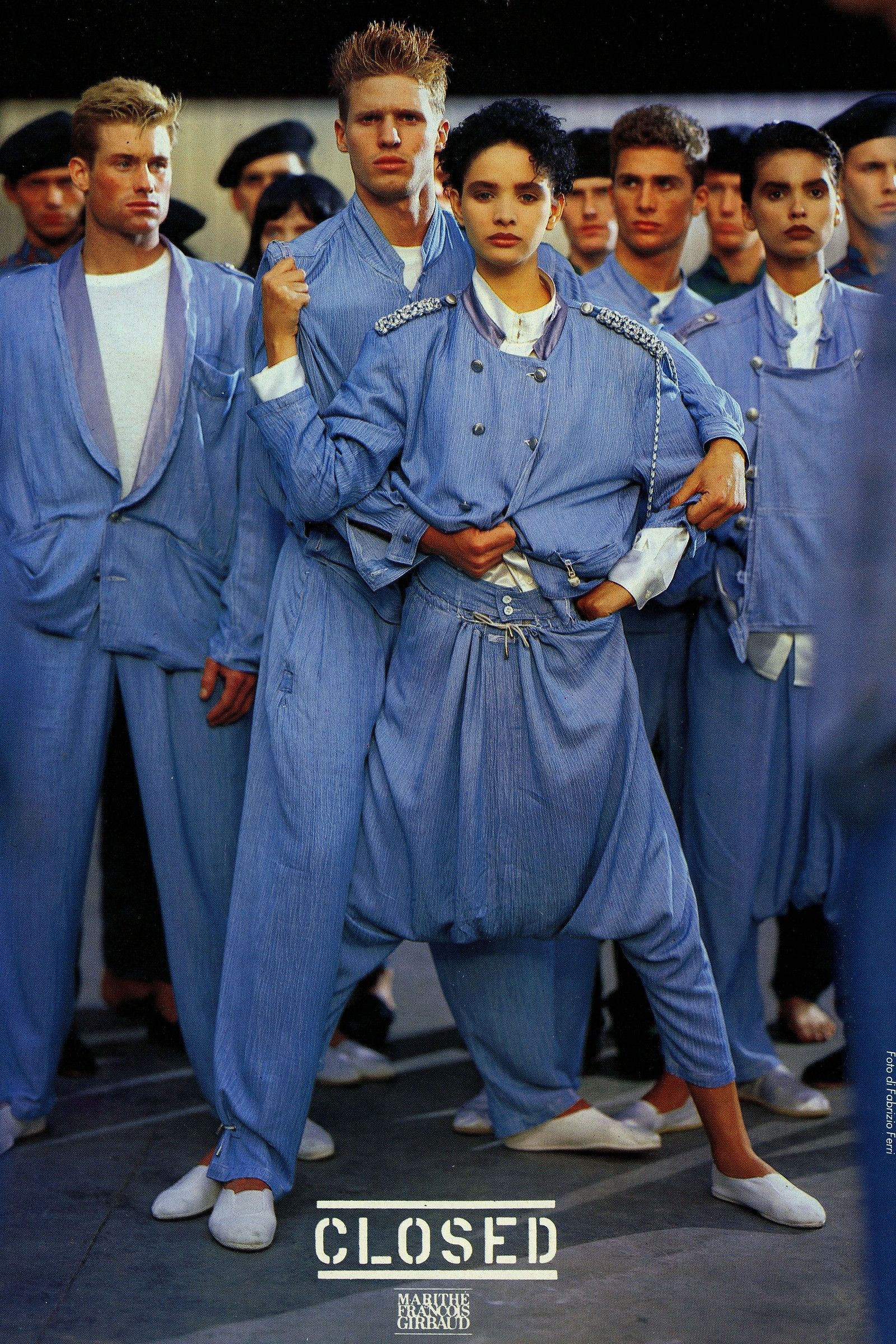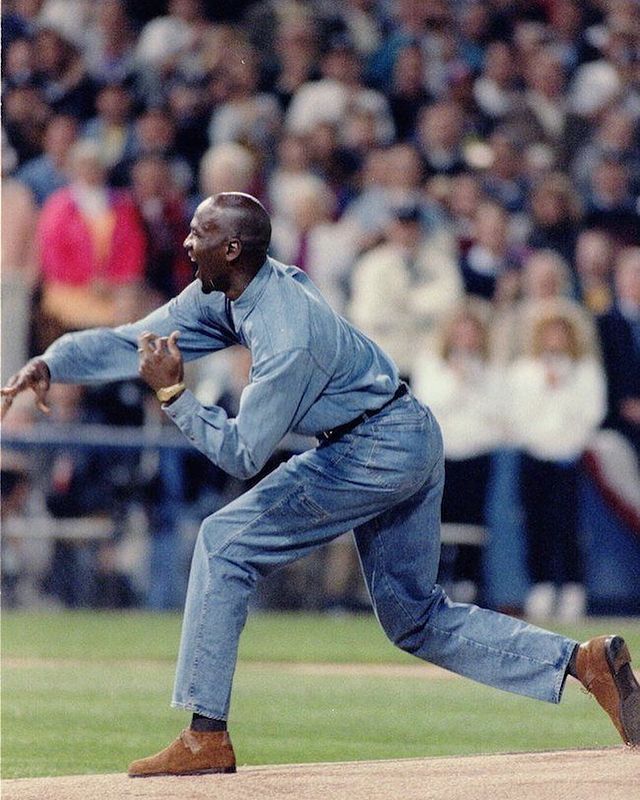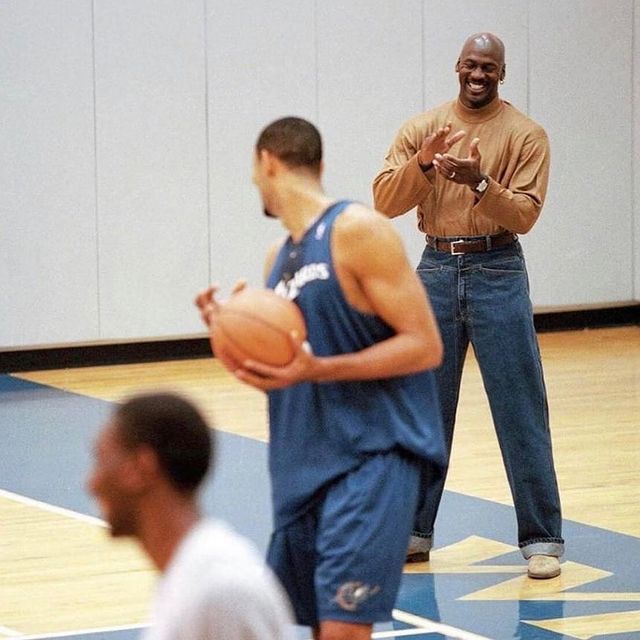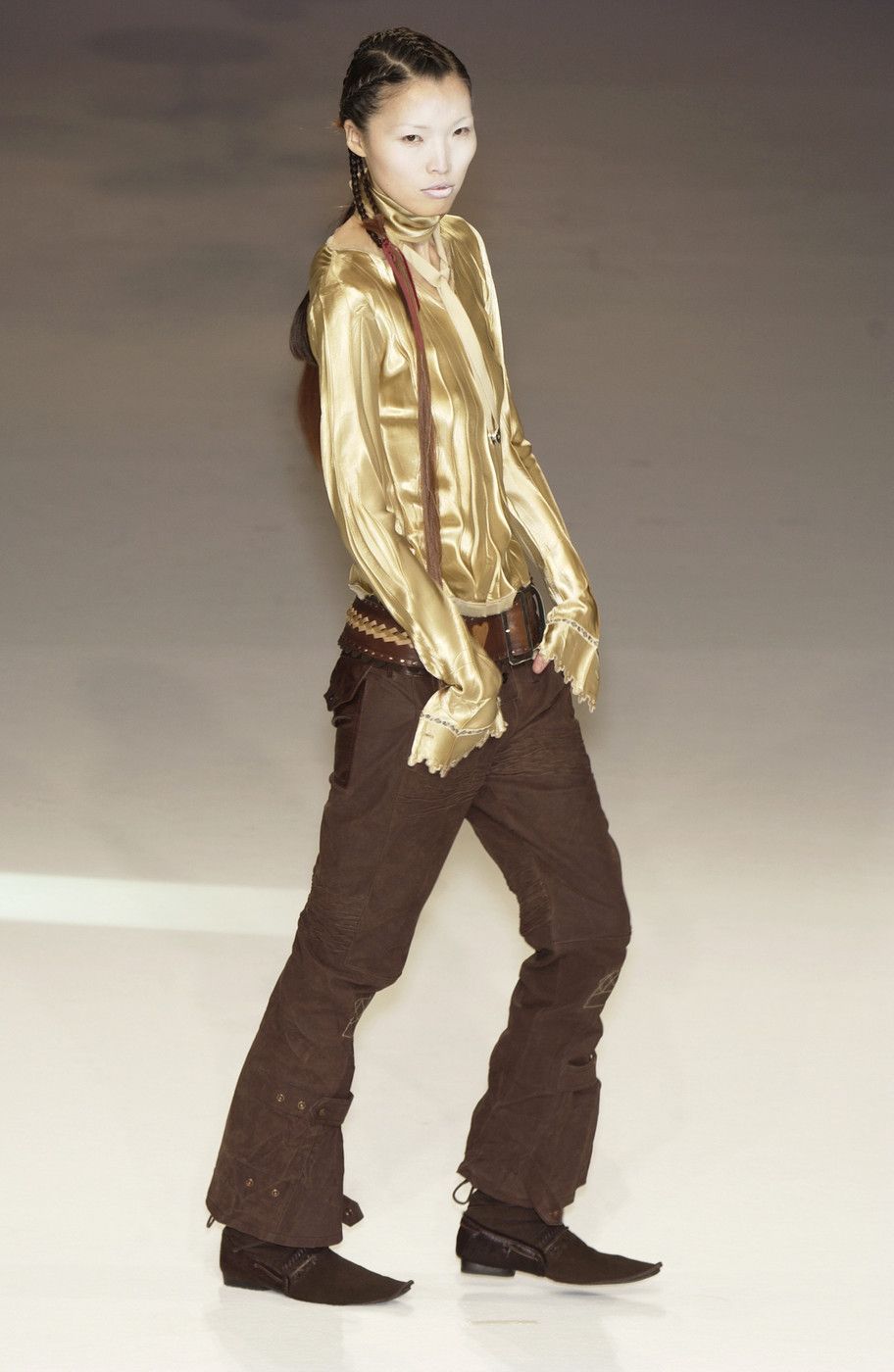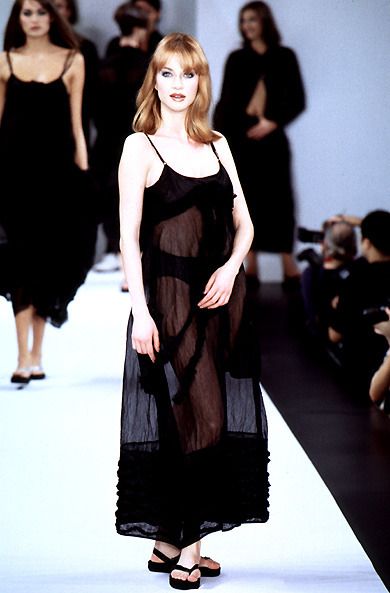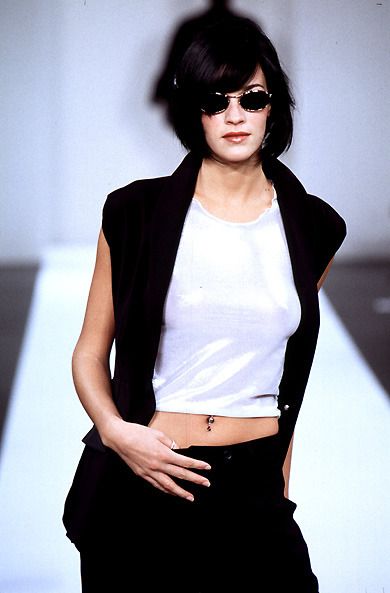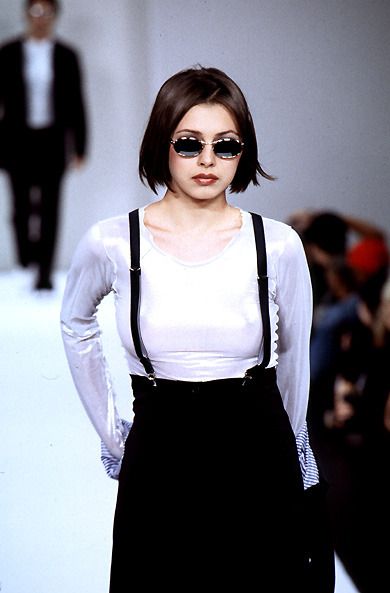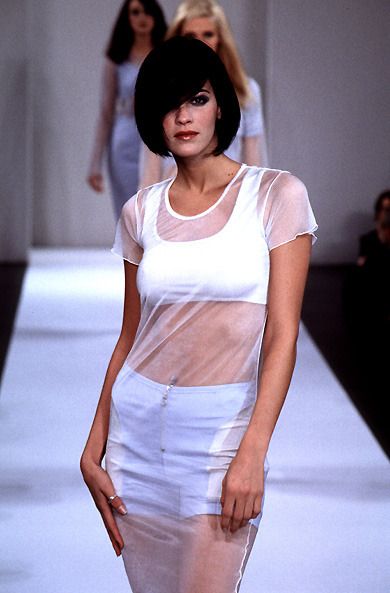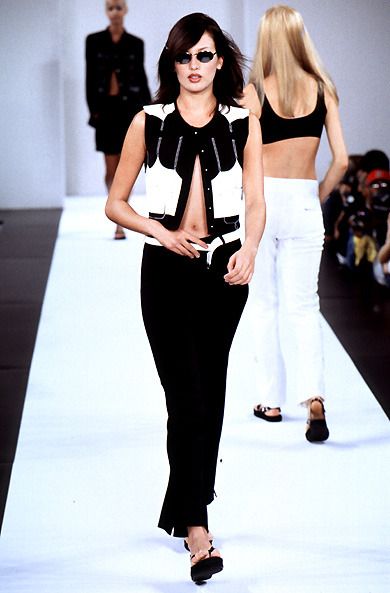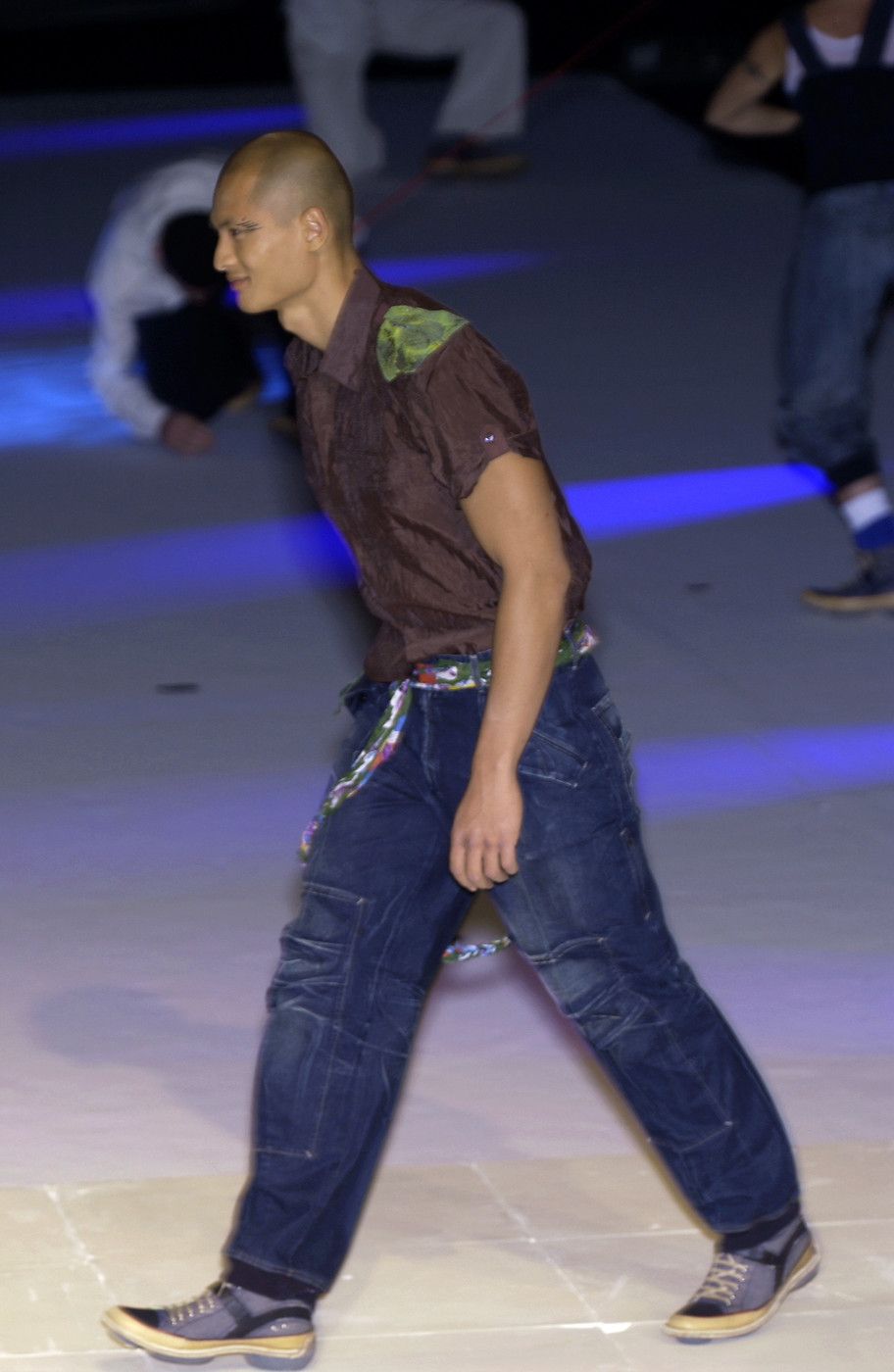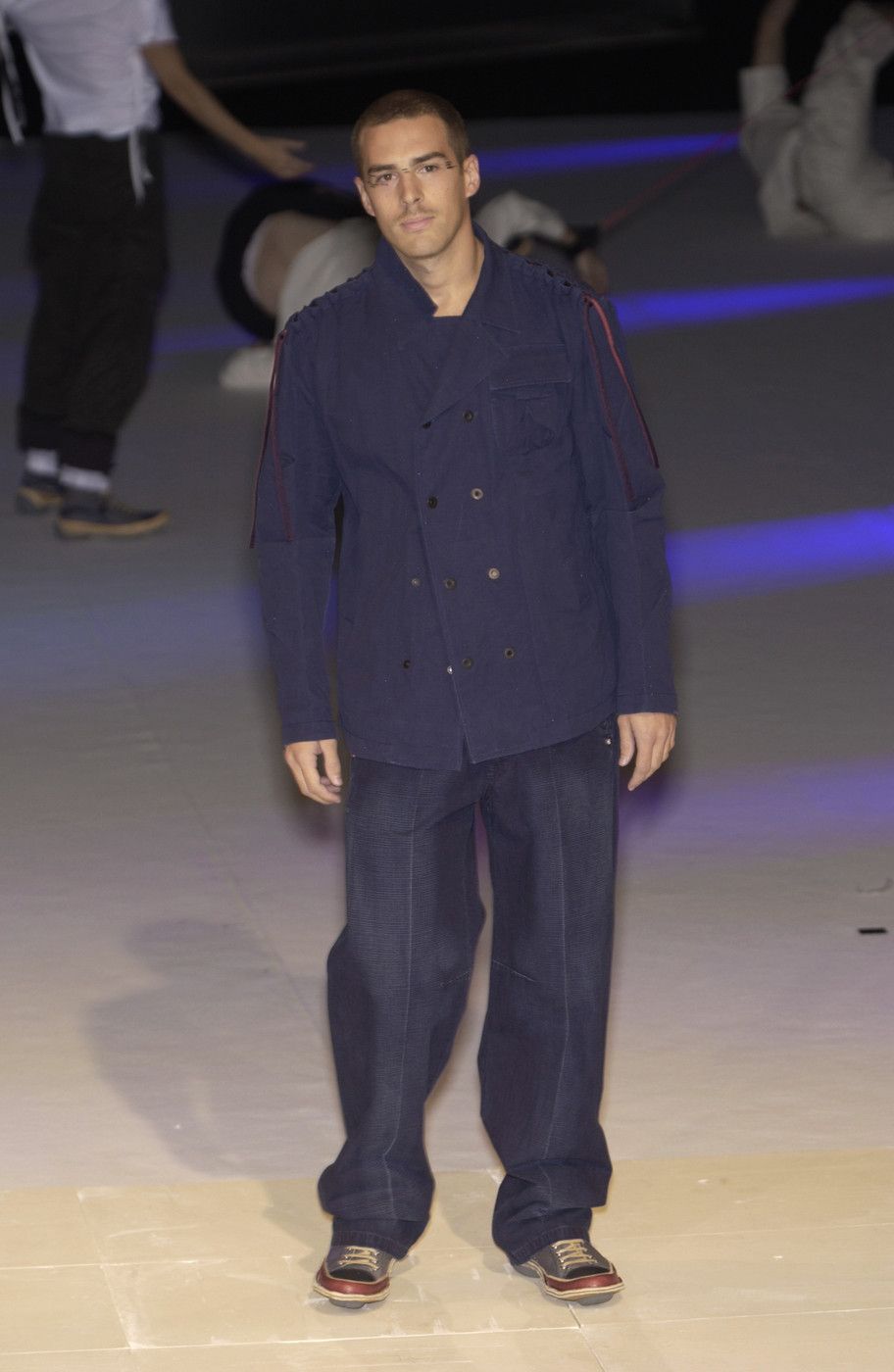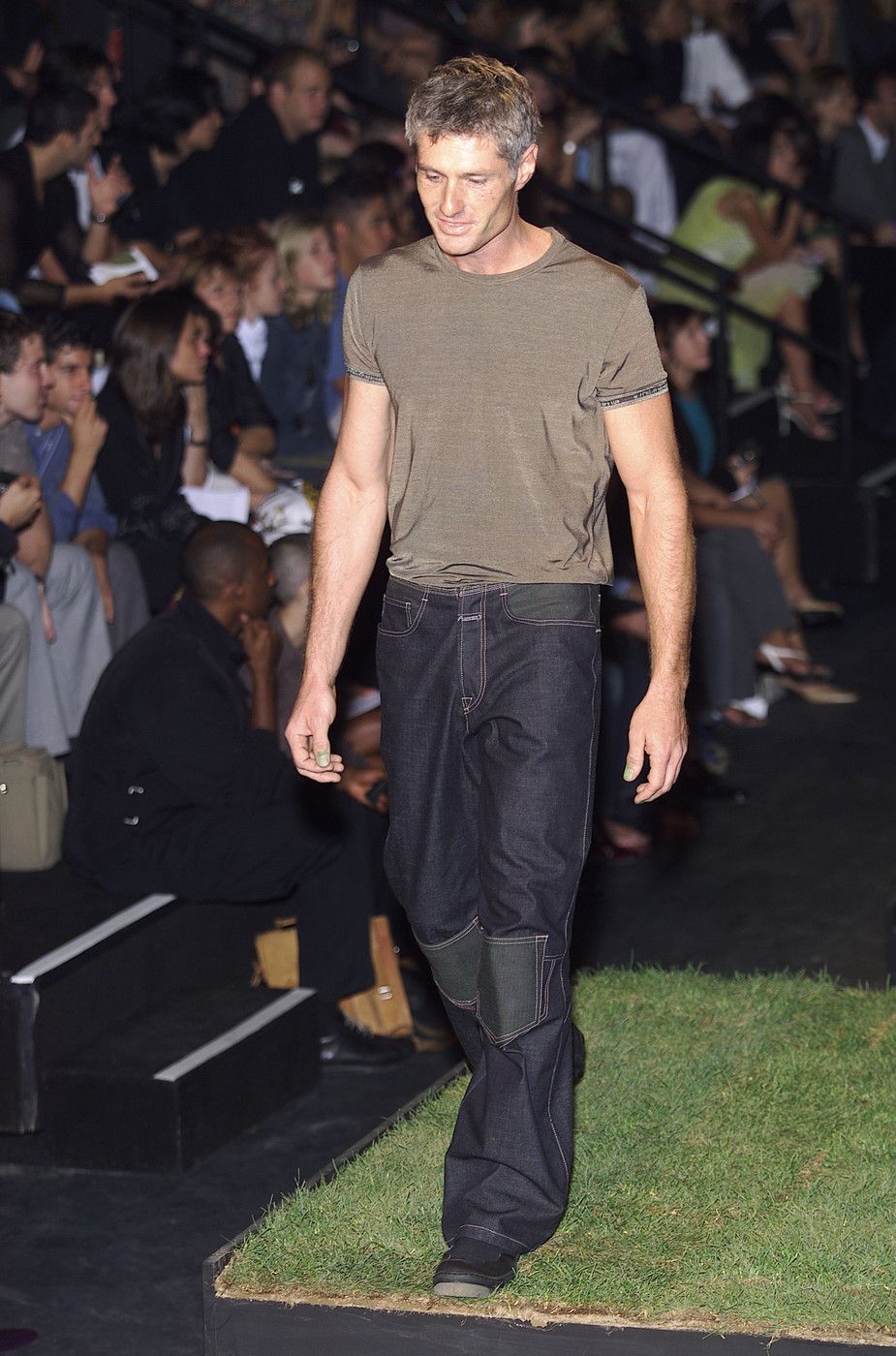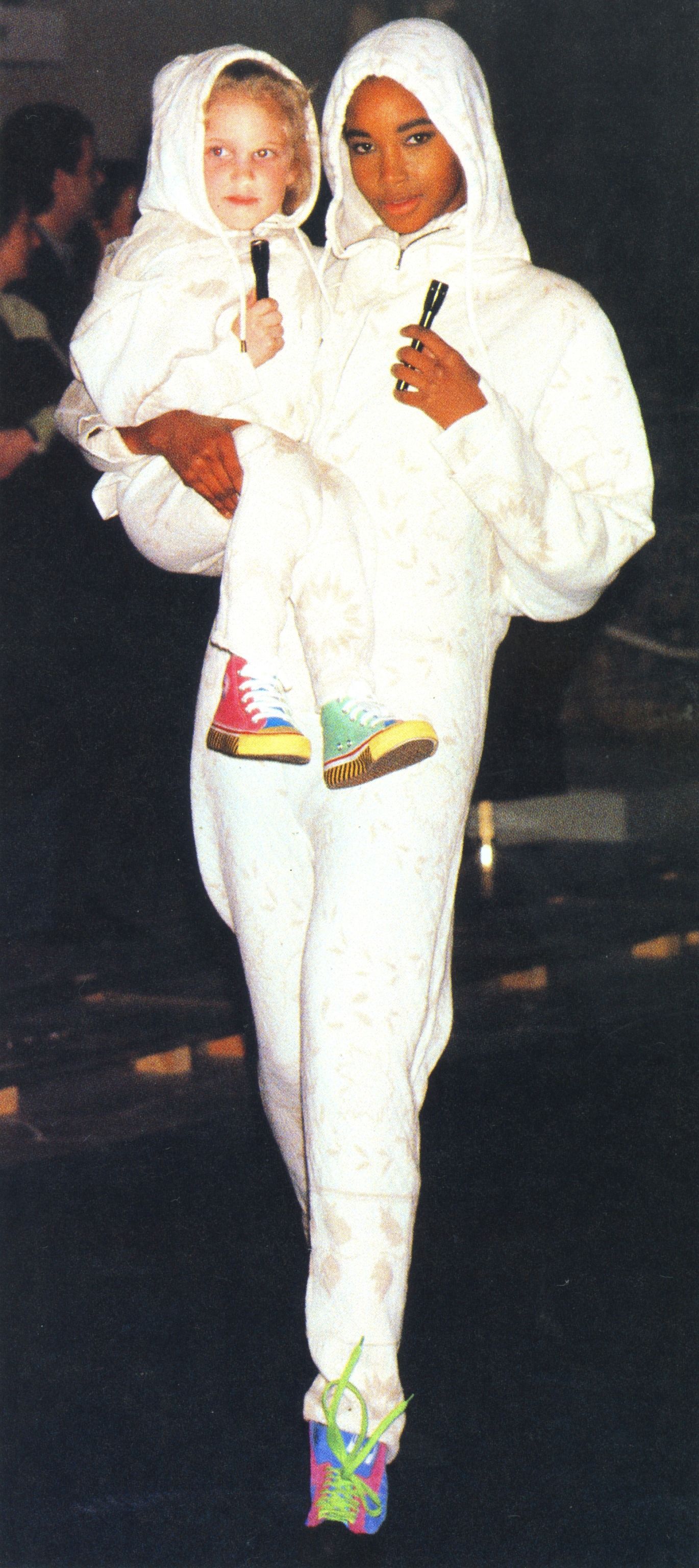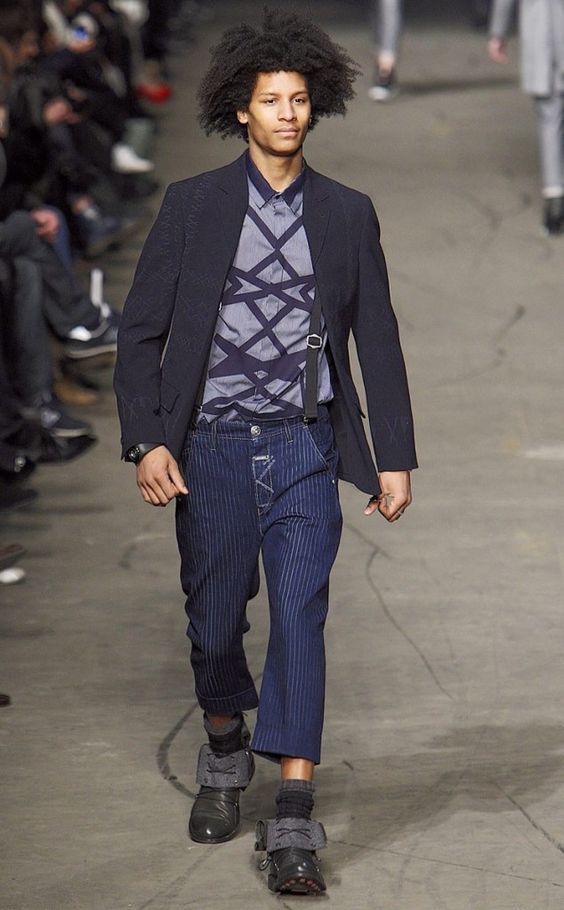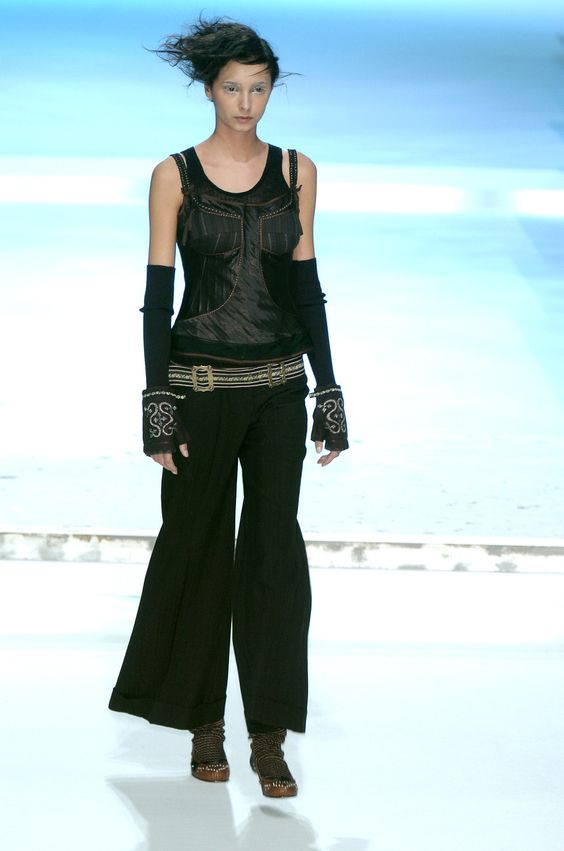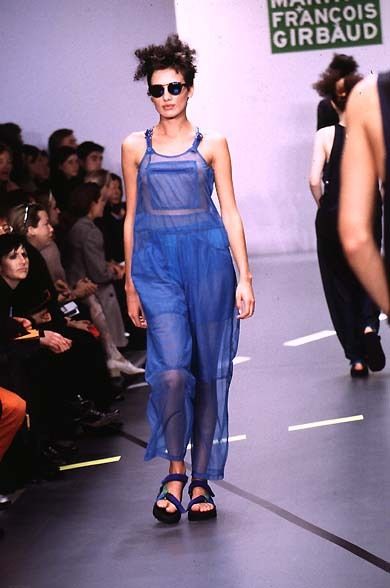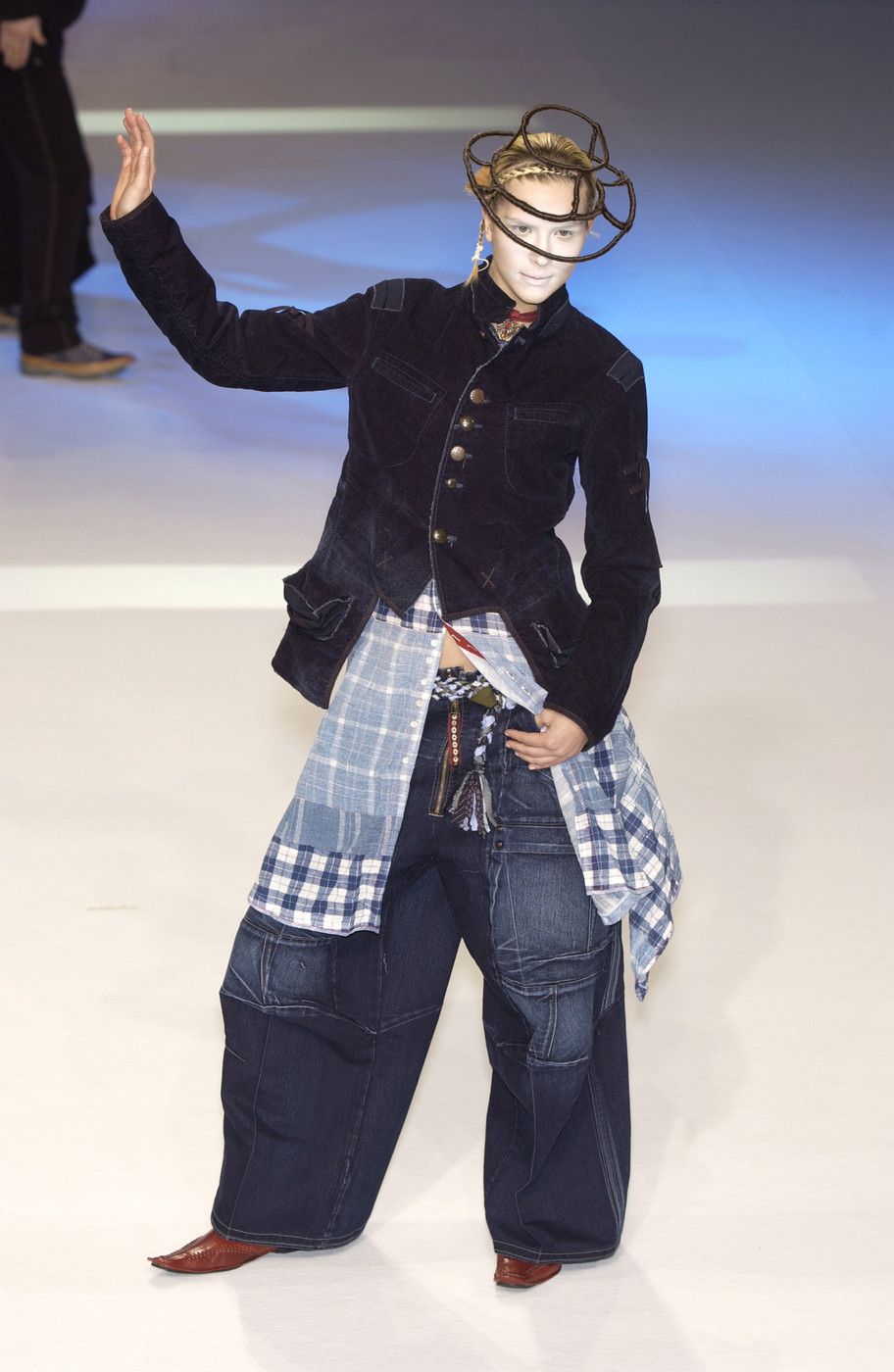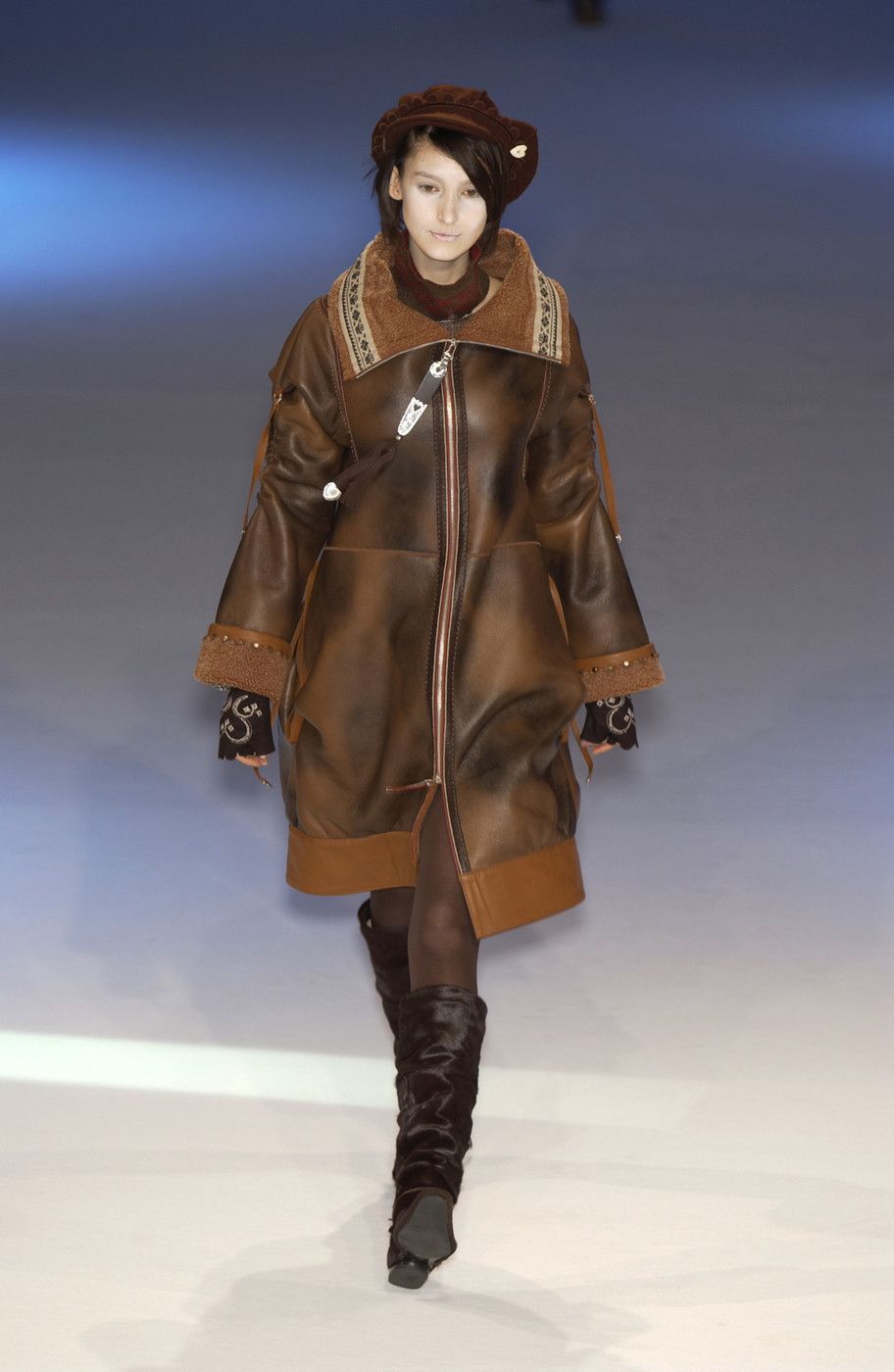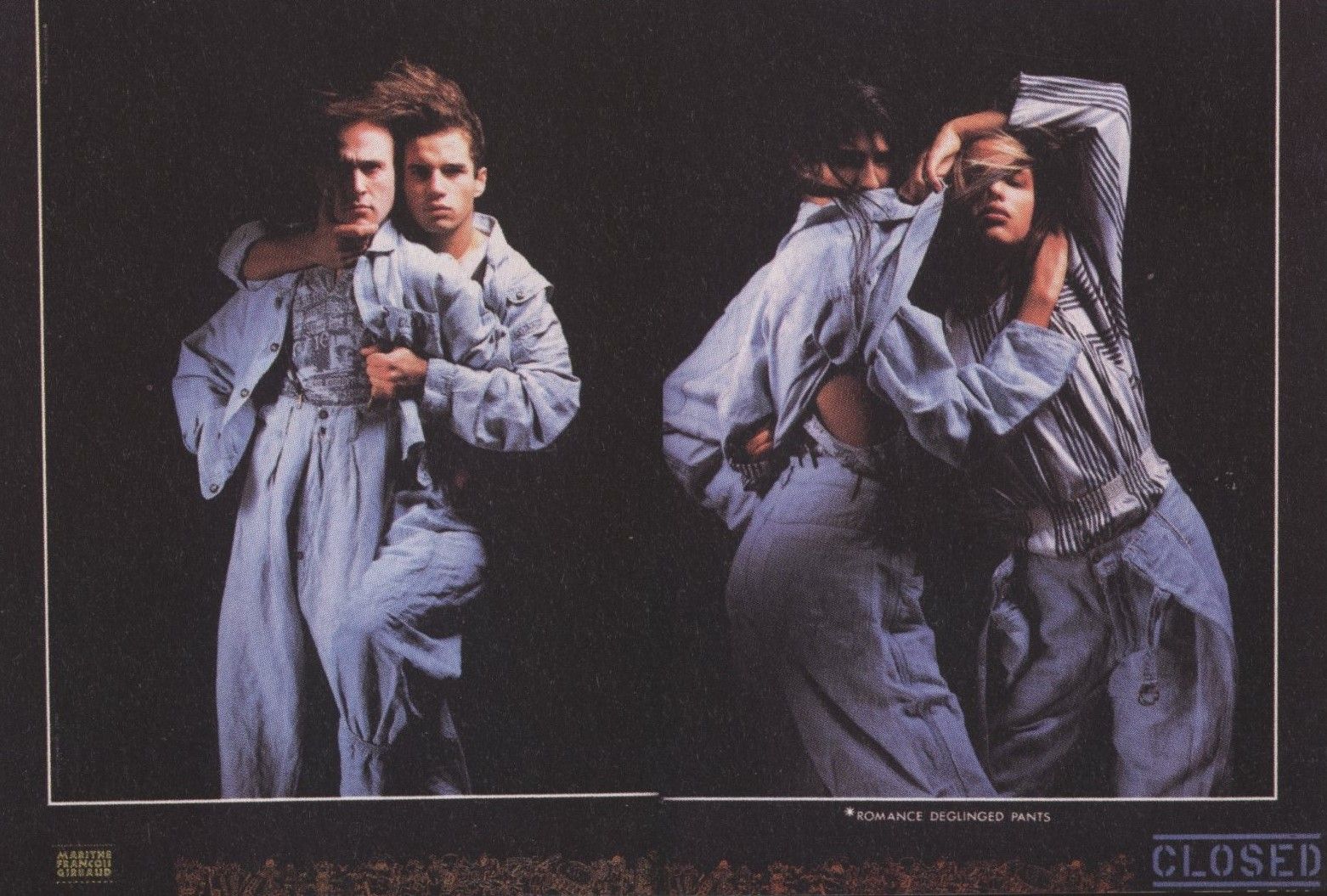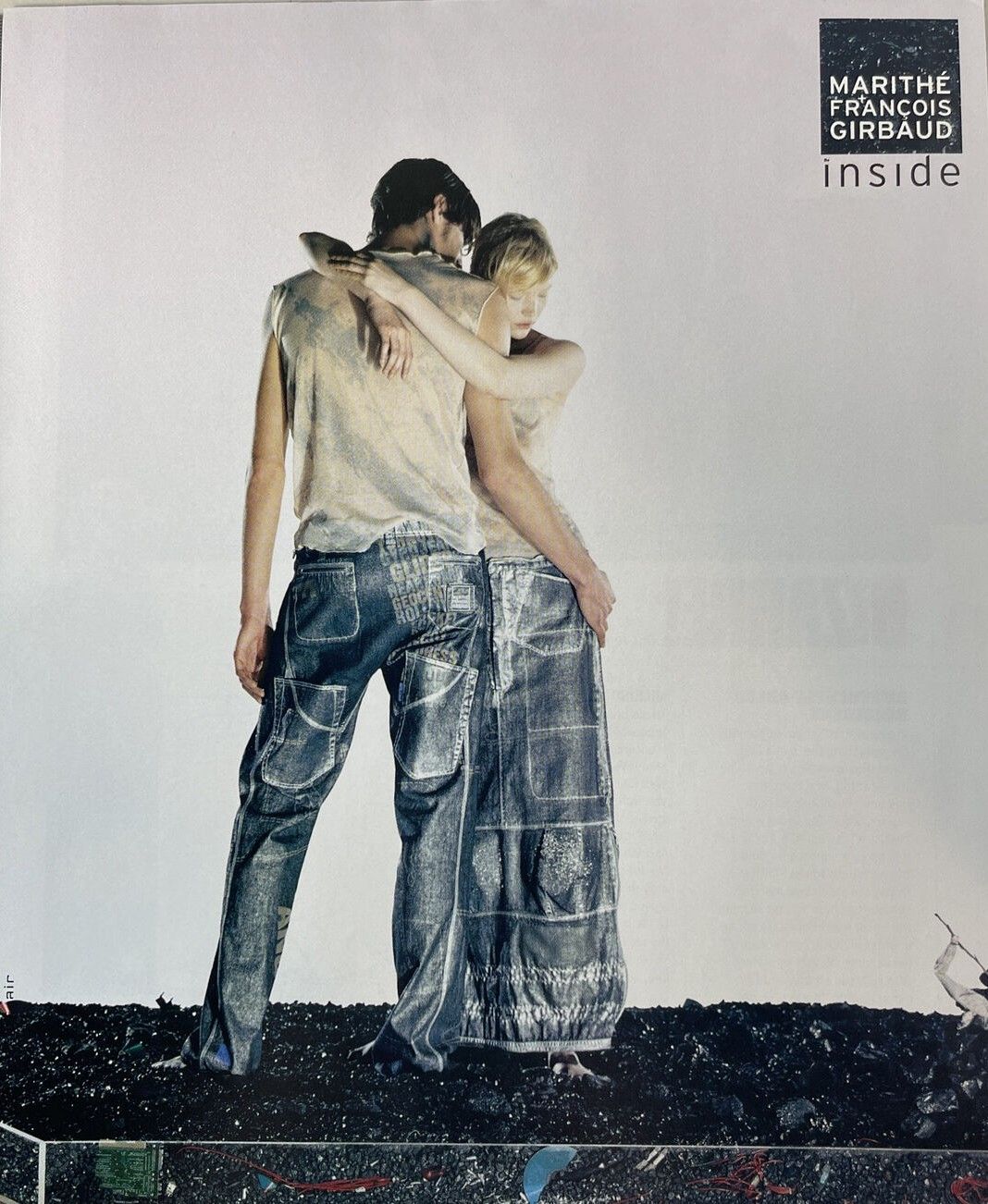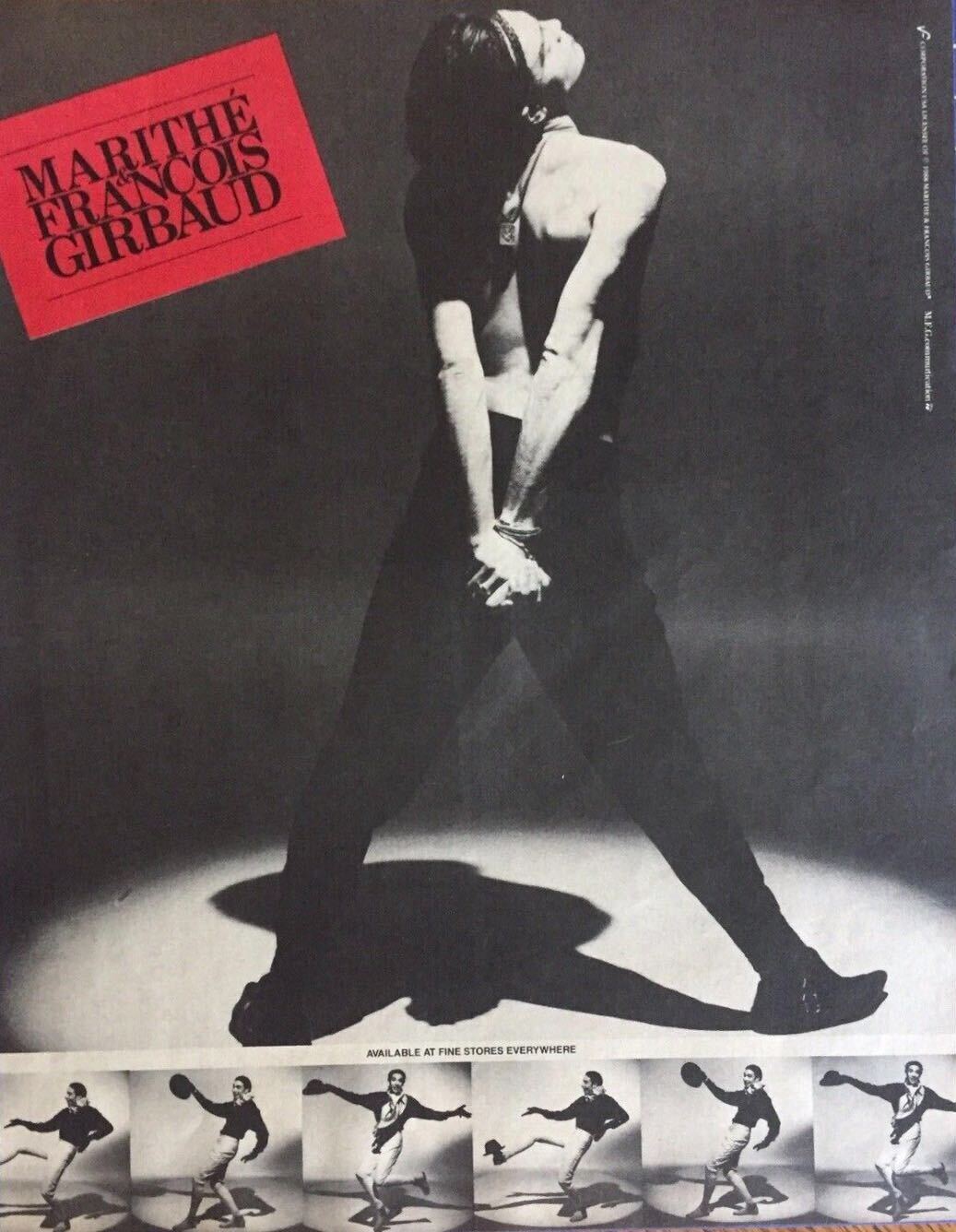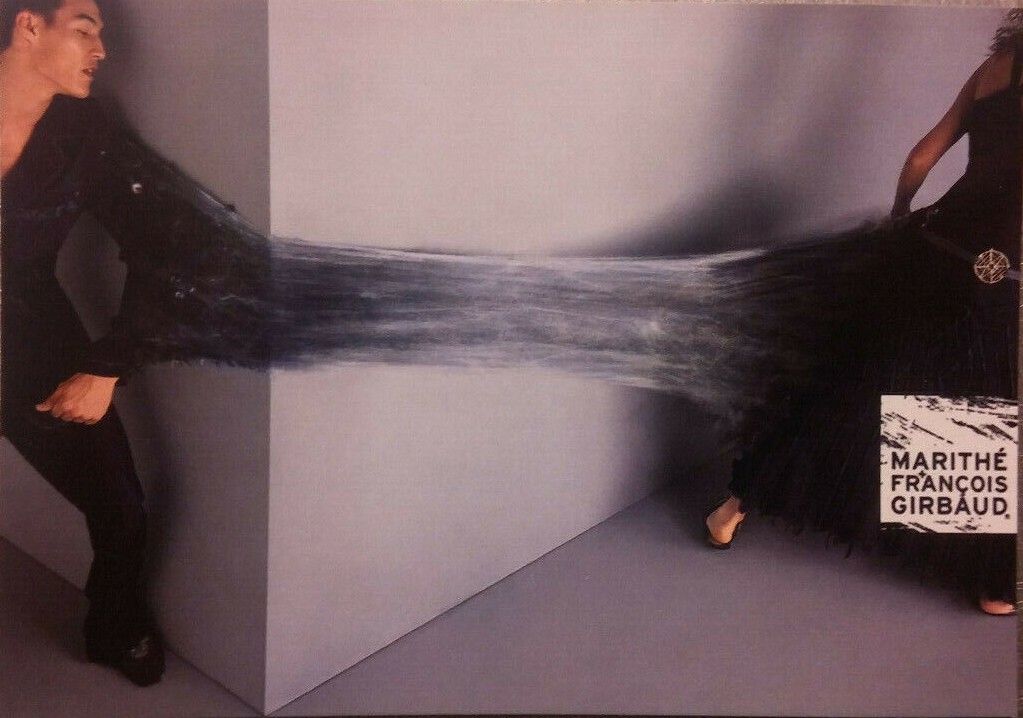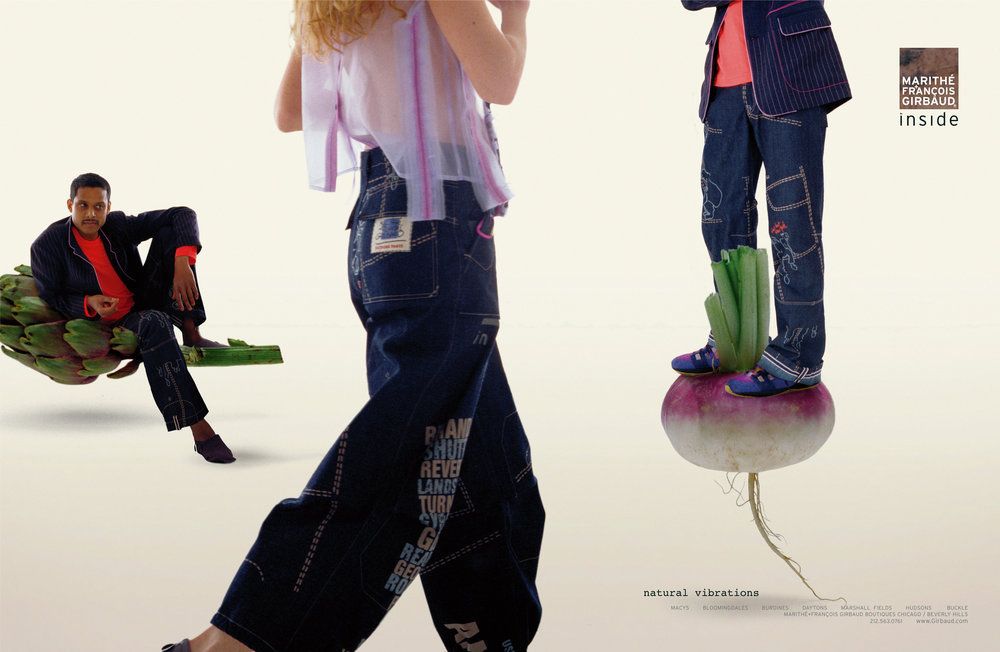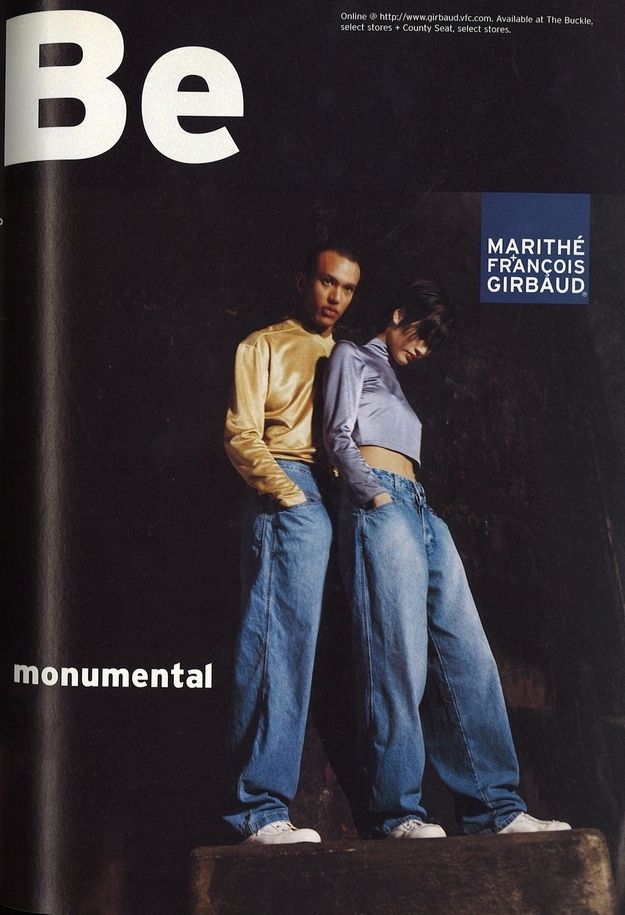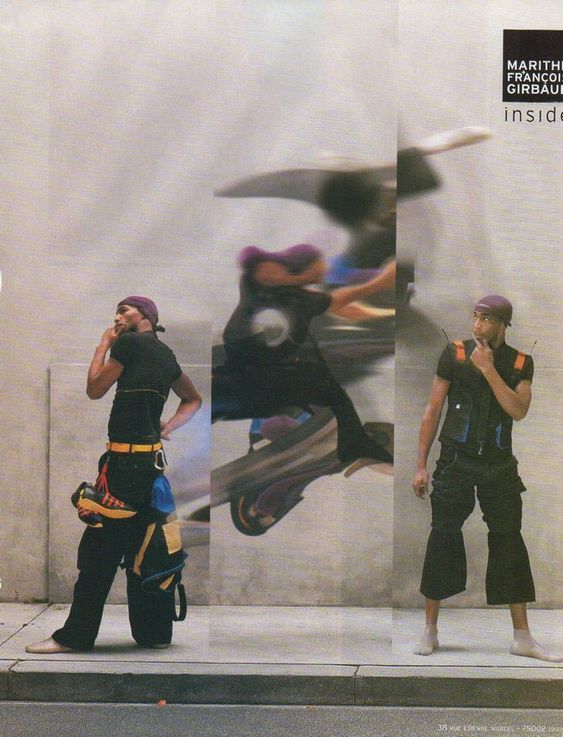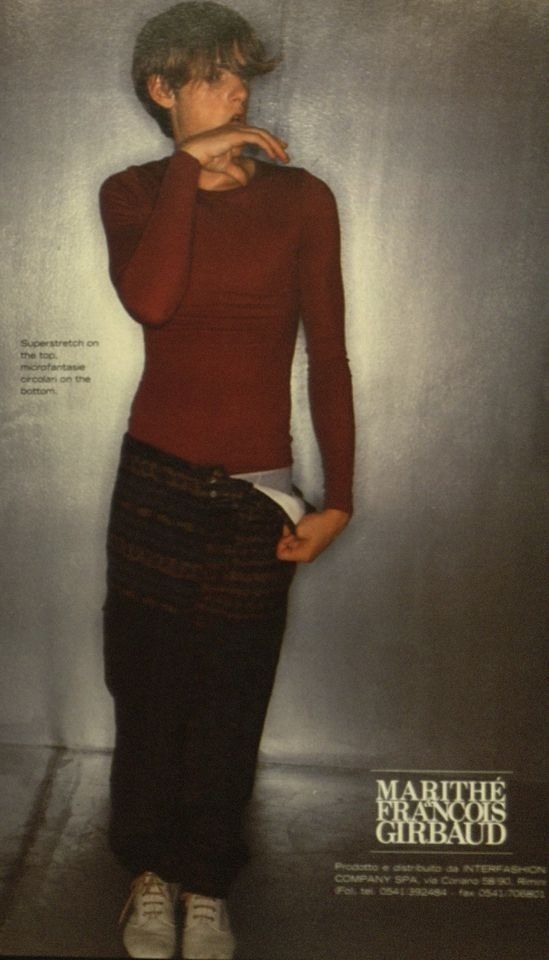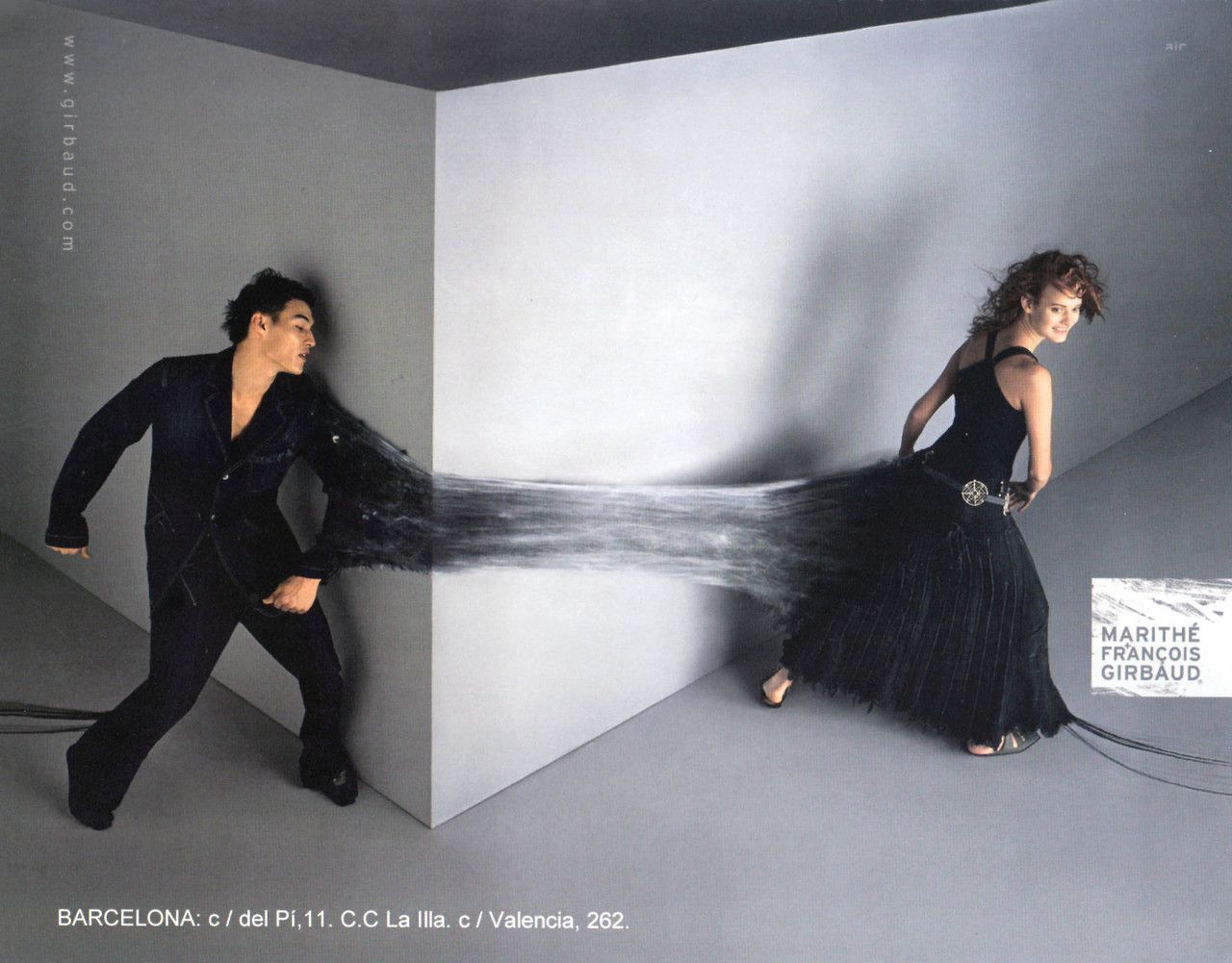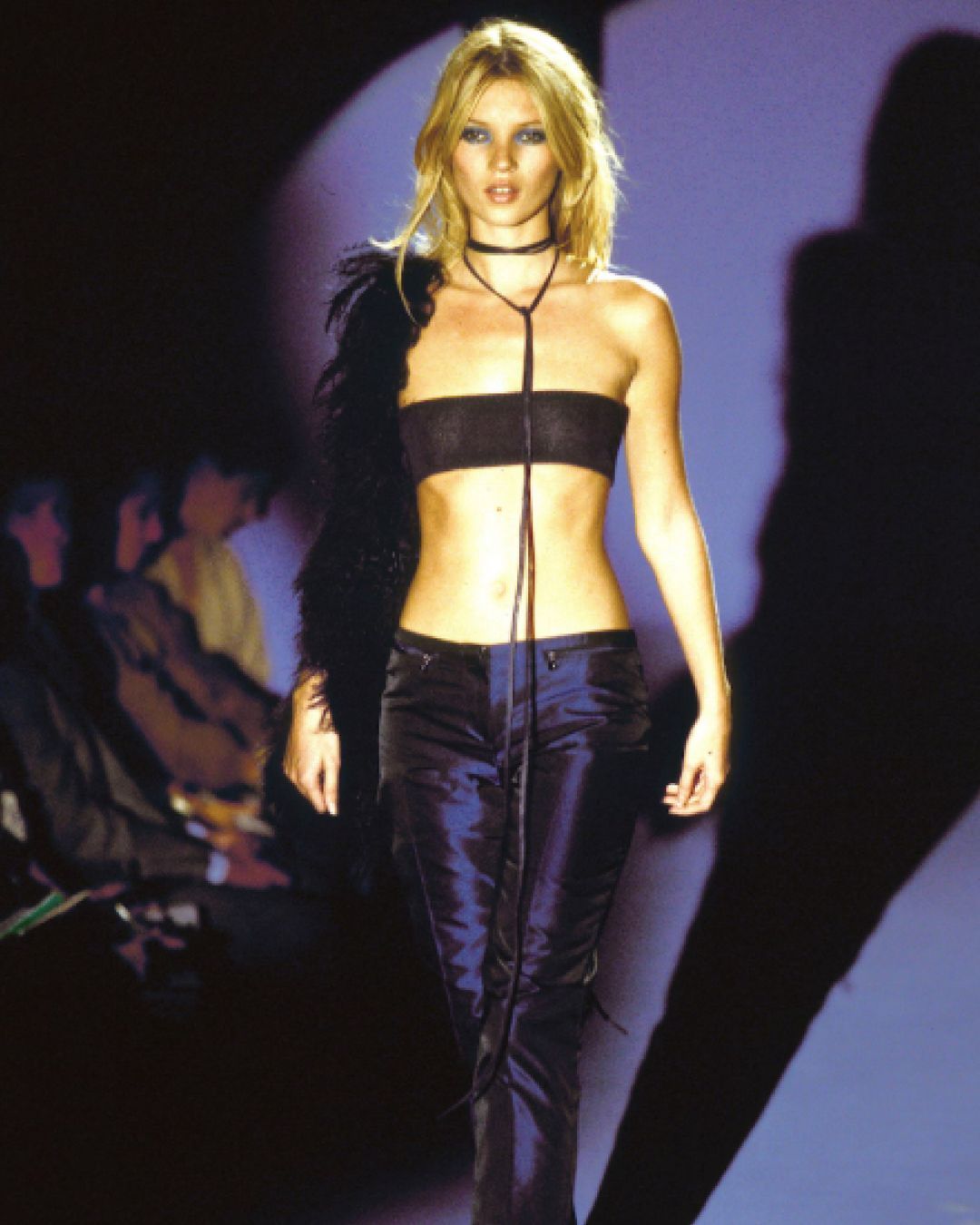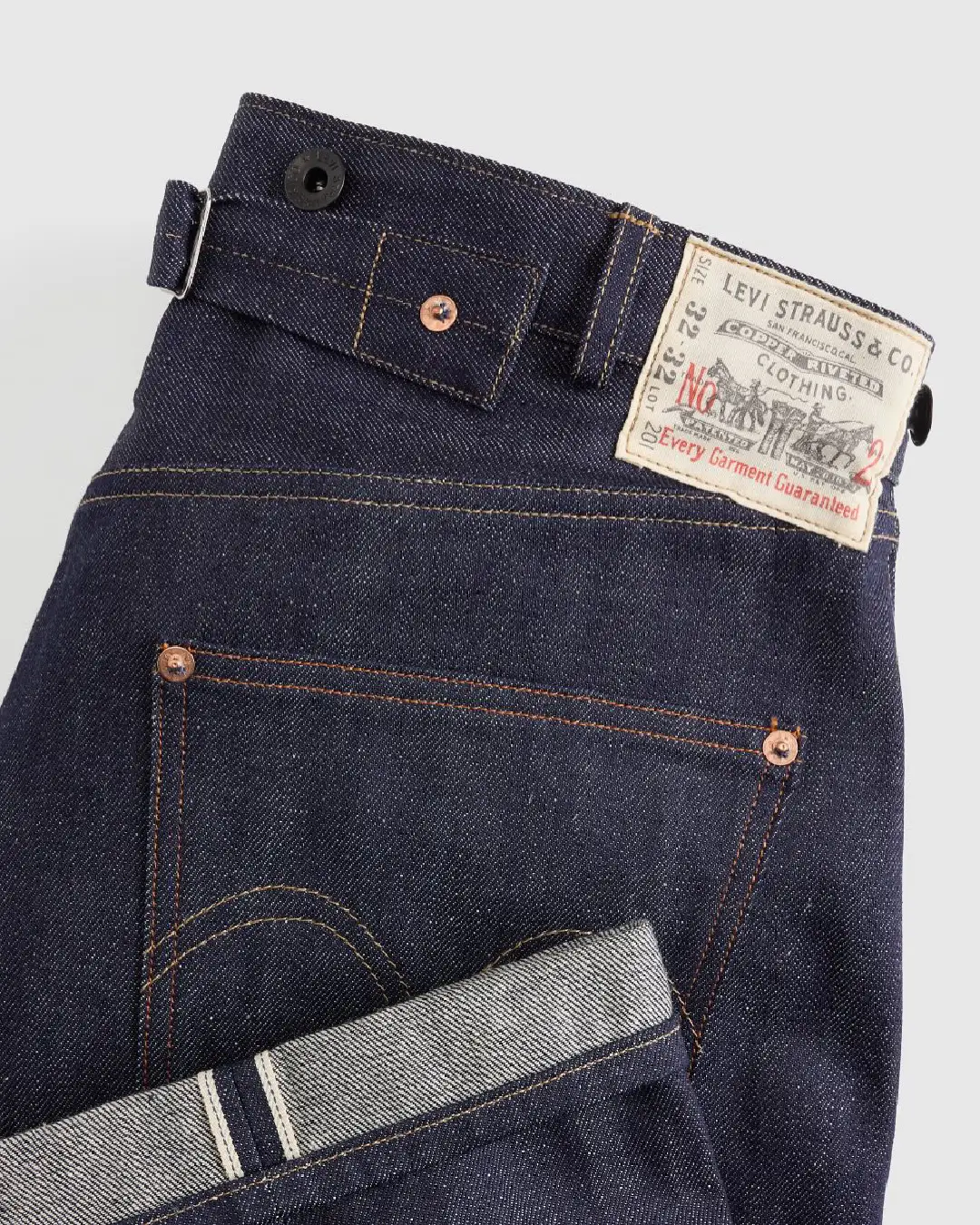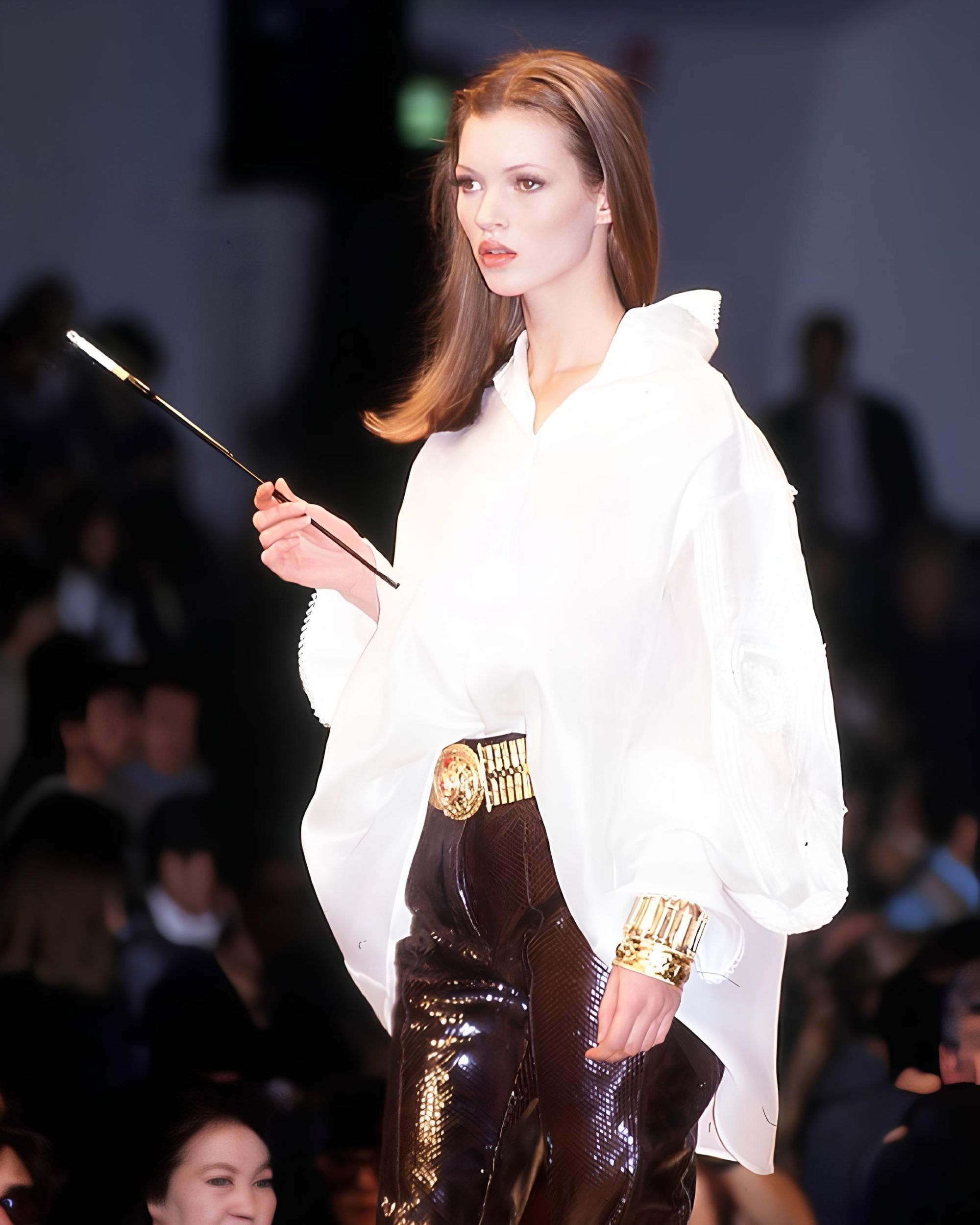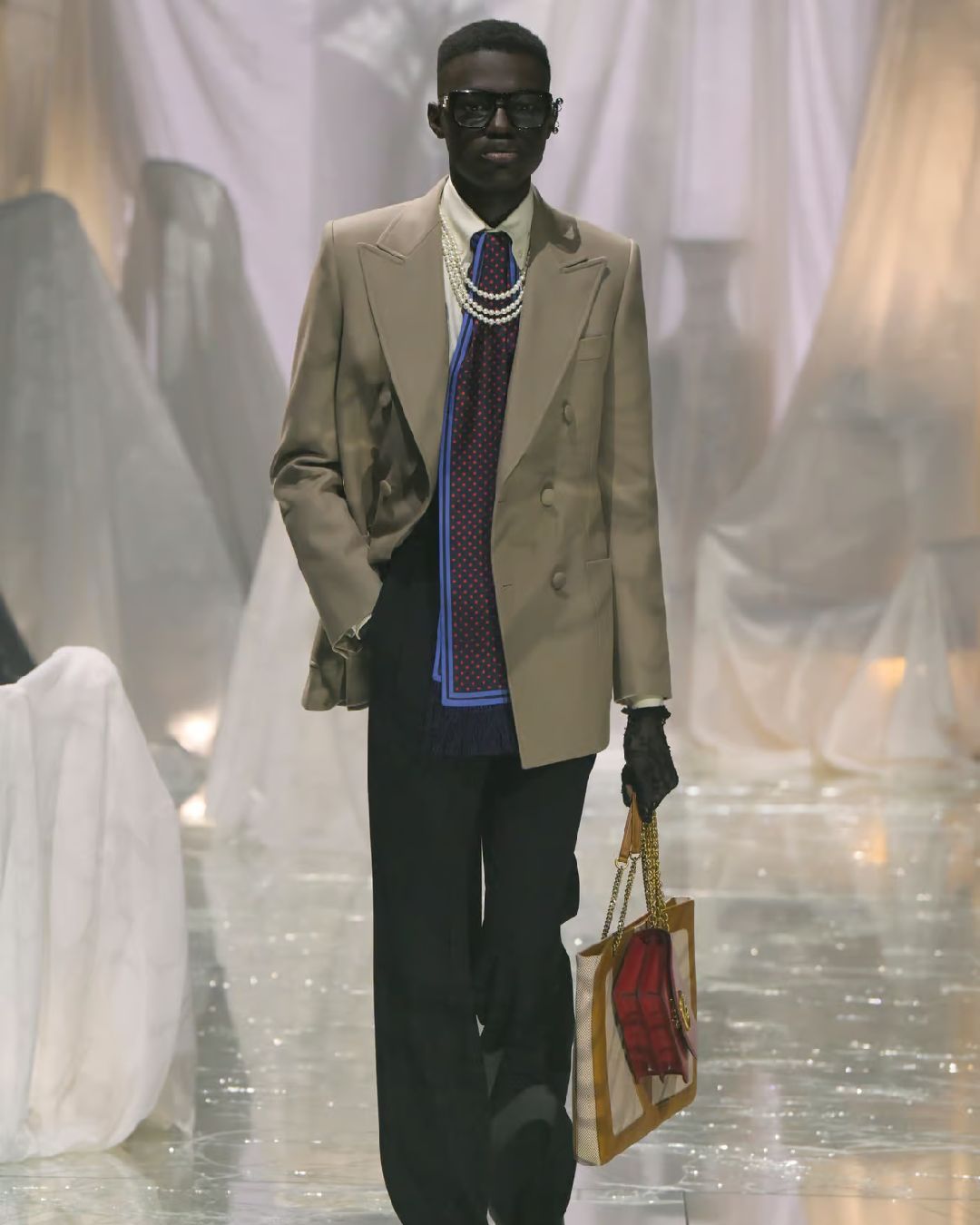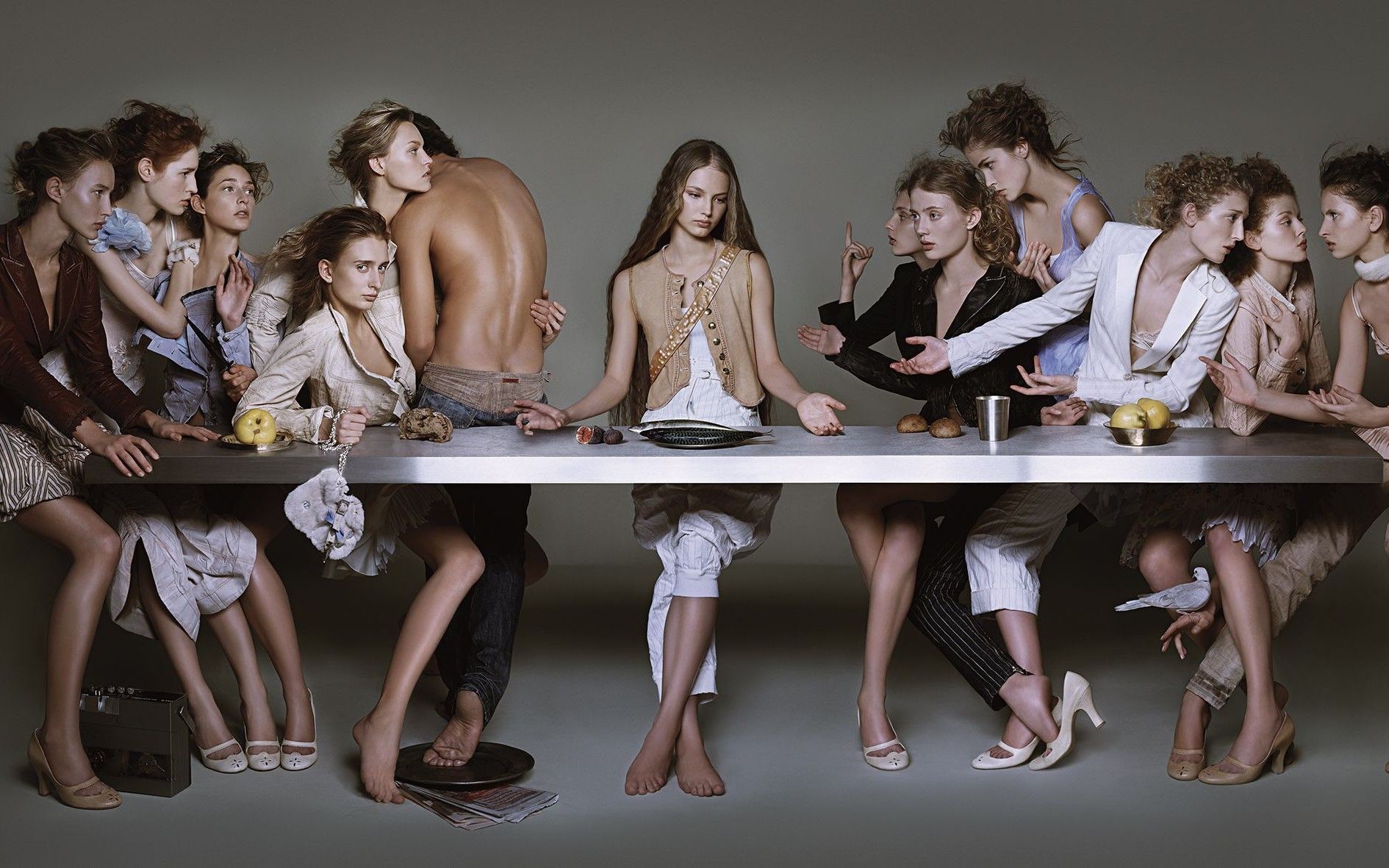
The radical innovation of Marithè + François Girbaud The brand that invented baggy jeans and has been rediscovered by archive fashion
Today jeans are such common garments that any brand, from the most exclusive to the cheapest, produces its own version. And if in response to this trend the experts and connoisseurs of selvedge denim, of Made in Japan denim seekers, of washing and aging experts are beginning to spring up, one brand that seems to be systematically forgotten by the general public is Marithè + François Girbaud - a French brand that is fairly well known in the rounds of archive fashion but today largely forgotten by the younger generation. Which is strange: it was Girbaud himself who invented the industrial technique of stonewashing jeans, also Girbaud invented stretch jeans by mixing elastic fibers with cotton, and baggy jeans in 1977 under the name Cargo Baggy that became famous in the United States and even ended up in Michael Jordan's wardrobe; they were also the first to experiment with laser cutting, ultrasonic welding, and a technique called "techno-fusion" to assemble their pieces without seams. Today, the creative duo's influence is still being felt in fashion - and not just because of the return of the Y2K aesthetic or the cultural weight that streetwear still holds, but because of the Girbauds' ability to mix aesthetic and technical innovation in a way that fashion, before them, could never have conceived.
Even when back in 2007 François Girbaud showed impatience with those who considered his brand to be exclusively tied to the hip-hop world, he stressed that innovation was his only interest: «Somewhere, the company was running too much in some direction, too much in hip-hop stuff […]. What we bring into the market was always innovative, and I feel now I am trapped and I have to just talk the same way […]. It’s boring, it’s really boring!». A quest for radical innovation that was also recently celebrated by a brand like C.P. Company, which made François Girbaud one of the faces of the FW22 collection lookbook. Today, the brand has slowly re-emerged thanks to searches of online archive pages, which have uncovered its denim from the 1990s and many of their famous cargo pants, along with bags, jackets and vests-though its memory remains somewhat difficult to fully reconstruct given the brand's founding couple, Marithé Bachellerie and François Girbaud, opened, rebranded, closed and sold a large number of lines and brands over the years: ÇA. ..., Matricule 11342, Compagnie des Montagnes et des Forêts, Closed, Compléments, Maillaparty, Momento Due, Reproduction, Dessine-moi une femme, Métamorphojean, Maillaparty-all, however, pertaining to the entity that still exists today, after different metamorphoses, as Marithè + François Girbaud. The multiplicity of labels under which the two have operated over a career spanning more than 50 years also often make archival research complicated, where often, for example, the brand's affiliation with Girbaud's universe has to be pointed out explicitly as if it were a collaboration. It also happened that Closed's jeans, for example, were sold in America as Girbaud, thus creating further confusion in identifying lines and collections.
But let's go back in time for a moment. We are in Saint-Tropez in 1967: Marithé Bachellerie and François Girbaud met, starting a love affair and a creative partnership that has not stopped to this day. The following year, the two founded ÇA, their first brand, which immediately ran into trouble in the form of a lawsuit by C&A - a lawsuit that was dismissed as 11342. Needing to find a new name, the two chose the very name of the lawsuit, and the brand's new name was Matricule 11342. The case was settled in 1978, at which time the brand was again renamed as Closed, a name that became final even after the brand passed into German hands during the 1990s. «He usually takes over the most creative part of the work – and he is most often looking for something that doesn’t exist. I am also a designer, but I mostly take care of the engineering and the construction of the product and about commercial aspects. [...] For instance, I choose fabrics, he rather thinks of styles and silhouettes...Though we always develop the collection together», recalled in 2017 Marithé Bachellerie who came to Milan to present their traveling concept store project Mad Lane. Meanwhile, the innovations they conceived increased: '76 was the year of industrial stonewashing that Marithè first experimented with in Belleville on a stock of old Wrangler jeans washed together with stones, '77 that of baggy jeans, 1980 the X-Pockets were invented that had pockets slanted of 33 degrees with an oblique opening, in the late 1980s the more sporty concepts Métamorphojean and SPQRCITY were born based on a radical innovation on materials that paved the way for techwear and based on elasticated vines and horses.
Meanwhile, in 1986, the two began producing under their own names, opening their own boutique and debuting at Paris Fashion Week with a fashion show at the Louvre. International success for the two, however, came via the film world. The epic 1983 hit Flashdance catapulted the Girbaud duo's baggy jeans onto the international stage, which, seen on Jennifer Beals, later to become the brand's ambassador, led to a seven-million-pair sales boom in a single year. The media success continued into the 1990s thanks to the success of Jump by hip-hop duo Kriss Kross, who wore Marithé + François Girbaud baggy jeans in the song's video clip. Two other important moments for the brand's notoriety were the commercials shot by Jean-Luc Godard in the early 1990s and the famous 2005 campaign that reproduced Leonardo's Last Supper and scandalized the Vatican, ending up censored in both Italy and France. Meanwhile between '95 and '97 the duo introduced further innovations such as ultrasonic welding techniques and laser cuts but also a coloring method named Blue Eternal that prevented jeans from fading, in '98 the Shuttle pants were launched that included Velcro straps to adjust their size and drapes, in 2003 instead it was the turn of Imajean, a technique that allowed writing with a laser on the fabric. The most epoch-making innovation, and perhaps the best counterpoint to Marithè Bachellerie's conception of stonewashing, was the Wattwash technique of artificially aging denim using a laser instead of stonewashing, allowing 97.5 percent water savings that was introduced in 2008.
These successes, however, were the beginning of the end: if around 2005 turnover with their Italian partner Stefanel touched $83 million by 2007, as Quartz reports, sales had dropped to $37 million, and having entered into partnership with Alberta and Massimo Ferretti that same year when the Stefanel agreement expired, the two designers hoped to raise turnover to 100 million within three years by moving to Italy, to San Giovanni in Marignano to be precise, with a new factory and a new strategy of expansion in Asia. However, no one had taken into account the long wave of the post-2008 economic crisis: if in 2011 Le Figaro spoke of a retail turnover of 200 million euros for the parent company, in fact, something went wrong and a local Italian newspaper speaks of a «balance sheet collapse in 2011 to a liability of about 21 million, an insolvency that the company could only clear for a fraction» for the Italian manufacturing company, which was put into liquidation by the same shareholders in March 2012 while the French parent company went into receivership. In a statement dated April 23 of that year, the Filctem-Cgil union wrote that «the enterprise had been in trouble for more than a year not because of the crisis but because of reckless management», finding itself, among other things, in a market increasingly dominated by brands such as Diesel or Guru and not adopting the e-commerce turn with the right timing.
In January 2013, the Italian manufacturing company went bankrupt while Indian entrepreneur Anupam Kothari at the head of the FFI (Fibre & Fabrics International) group took over part of the French parent company, saving it, but transferred its production to Bangalore. Between crisis and competition, the brand found itself having to close several stores in Europe and cut staff, a spiral that ended in 2014 with the termination of the contract with FFI and the cancellation of the SS15 show at Paris Fashion Week. After this trainwreck, the creative duo reinvented themselves the following year with Mad Lane, which the brand's website describes as follows: «The store-less concept avoids the permanent store formula, preferring to go on tour in France, Belgium and Italy to meet fans. Sale by appointment in temporary pop-up shops thanks to a unique ticketing system to offer a unique experience and service. More than 60 stops have been recorded on the Mad Lane Tour».
@constant_practice Girbaud Release 5 online now!#isseymiyake #yohjiyamamoto #commedesgarçons #armani #craiggreen #finalhome #junyawatanabe #katharinehamnett #kikokostadinov #margiela #mandarinaduck #helmutlang #yeezy #rickowens #oakley #girbaud #vintageclothes #oakley #vintagemilitary #clothingstore #vintagemenswear #gorpcore #archive #designer #fashion #clothing #mensfashion original sound - Constant Practice
At the moment, however, the brand's social media have been inactive since June 2021 (the brand's last Facebook post dates back to this date) while there are no Mad Lane Tour dates on the official website. But if in its official capacity the brand appears to be almost abandoned, the archival fashion world has rediscovered the Marithé + François Girbaud of the golden years, fueling its fame once again. Today the name of Marithé + François Girbaud is synonymous with archival fashion, hardly any brand from the past with such a long history has perhaps aged better with its avant-garde constructions, composite textures, asymmetries and total experimentalism. But the brand's heritage has not been lost: one only has to look at some of the old fashion shows to notice, in that architectural and intricately layered denim, similarities to the work of Glenn Martens or, in its huge jeans carpeted with pockets, a precursor to Balenciaga's monumental jeans.









































